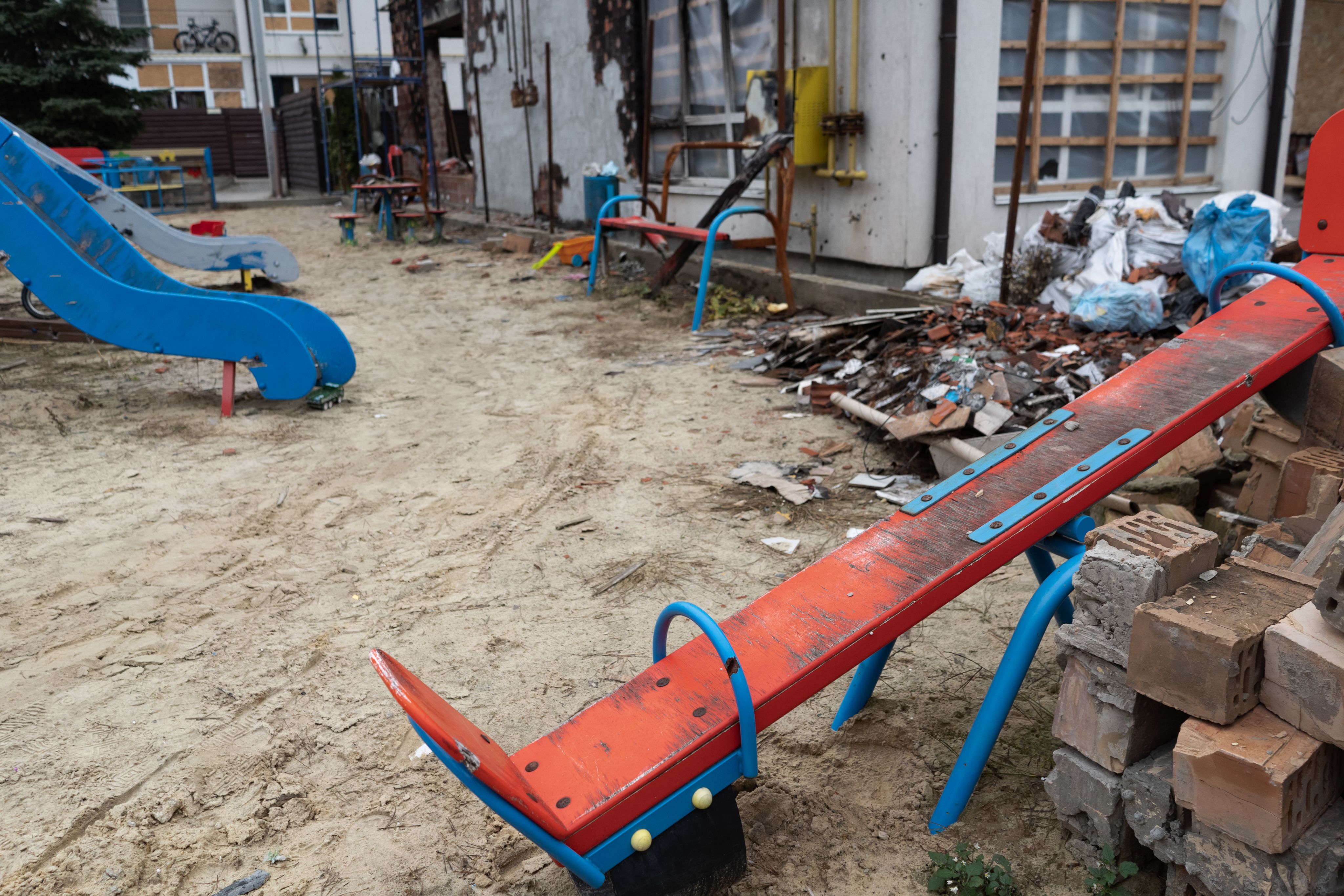UKRAINE: One year of war through the eyes of an aid worker
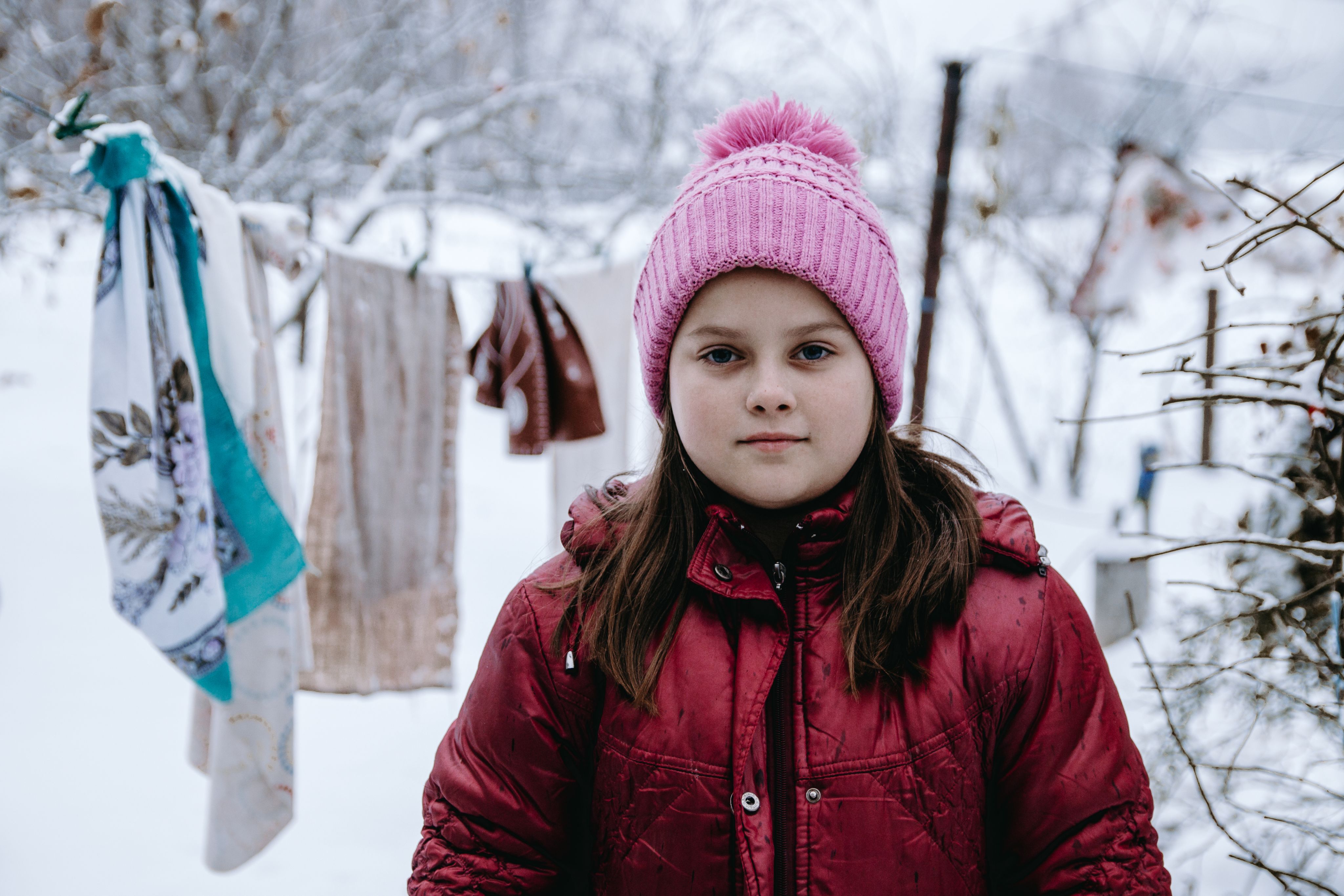
This is how the story started...
On the 24th February 2022 the war in Ukraine escalated dramatically. Suddenly, all 7.5 million children across the country were in grave danger of physical harm, severe emotional distress, and displacement.
Explosions were heard in the capital Kyiv and other major cities such as Kharkiv, forcing children and families into basements and bomb shelters. Parents tried to calm terrified children. Thousands more fled the capital, mostly by car. Temperatures dropped below freezing. Displaced children faced long nights and days exposed to brutal conditions.
The year that followed is not one anyone could have ever imagined.
My name is Kateryna, and as an aid worker from Ukraine, I also feel a part of this story as I lived through it.
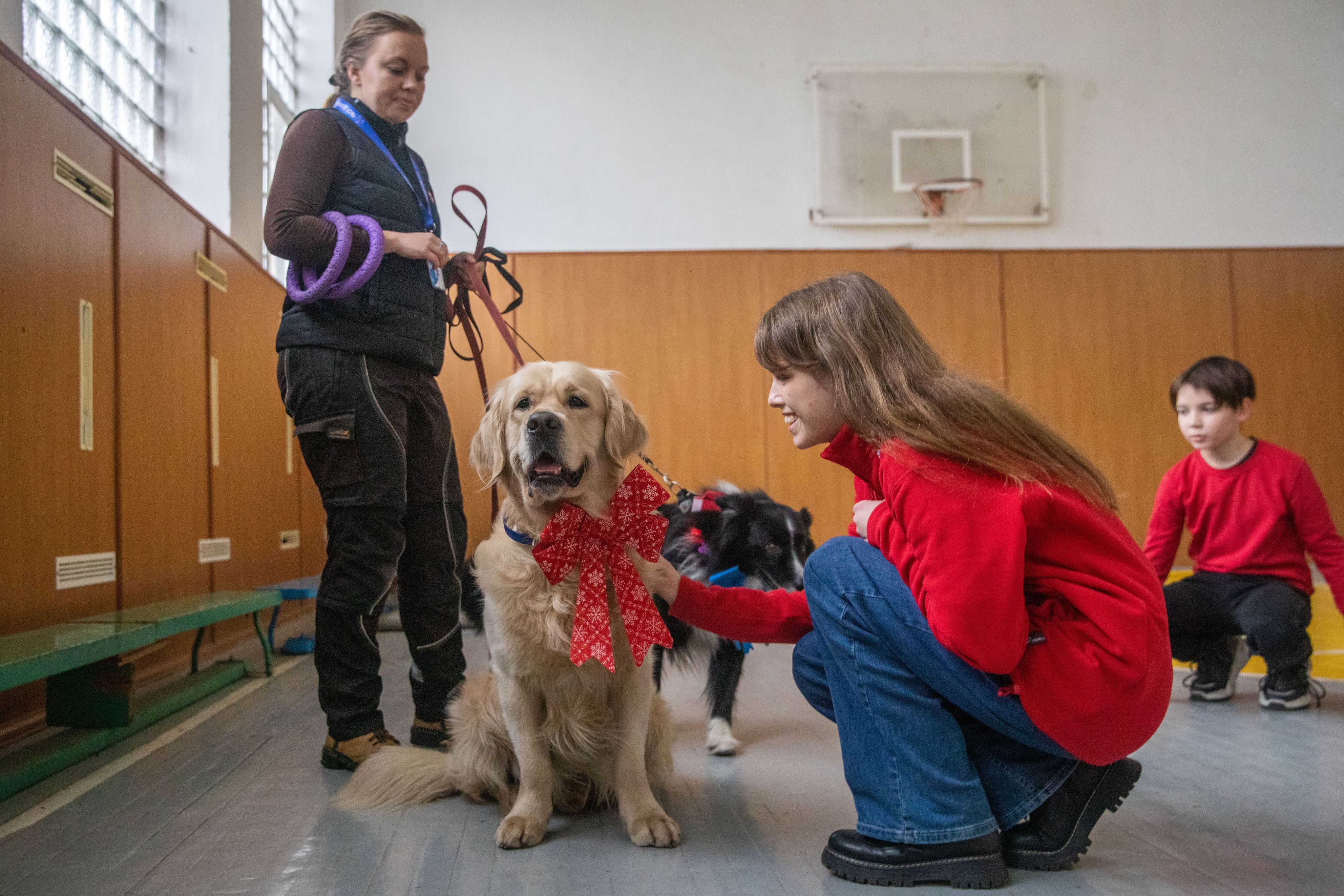
Kateryna photographed with therapy dog, Parker.
Kateryna photographed with therapy dog, Parker.
I work for Save the Children in Ukraine as our Information and Communications Coordinator. I am from Sloviansk, Donetsk region, in Eastern Ukraine but I have been living in Kyiv for the last few years. I haven`t been working for Save the Children for a long time - just a year and a half, but it definitely feels like it`s been ages. In my role, I capture the experiences of children and their families through interviews and photos, work on reporting and coordinate with our teams across Ukraine on various creative communications products.
When the war escalated dramatically a year ago, my life changed. I was actually in Stockholm in Sweden, for a short vacation when I first heard what was happening. My international colleagues immediately offered support for me to stay in Sweden, in safety. This was very heart-warming indeed. But, I decided to head back to Ukraine, because I knew that I needed to be there to do anything I could to help.
This wasn't the first time I experienced conflict in my country. I have already been an internally displaced person (IDP) back in 2014 as I lived with my family in Sloviansk, Donetsk region, when the war started in Eastern Ukraine. It literally came to my hometown. For me, the war has already been going on for almost nine years, not just this one. The difference this time is that all Ukraine's major cities and regions that had previously not experienced war have now come under fire.
In these last 12 months I've been around the country, meeting families and seeing the work Save the Children has been doing with the support of my colleagues, our partners and supporters.
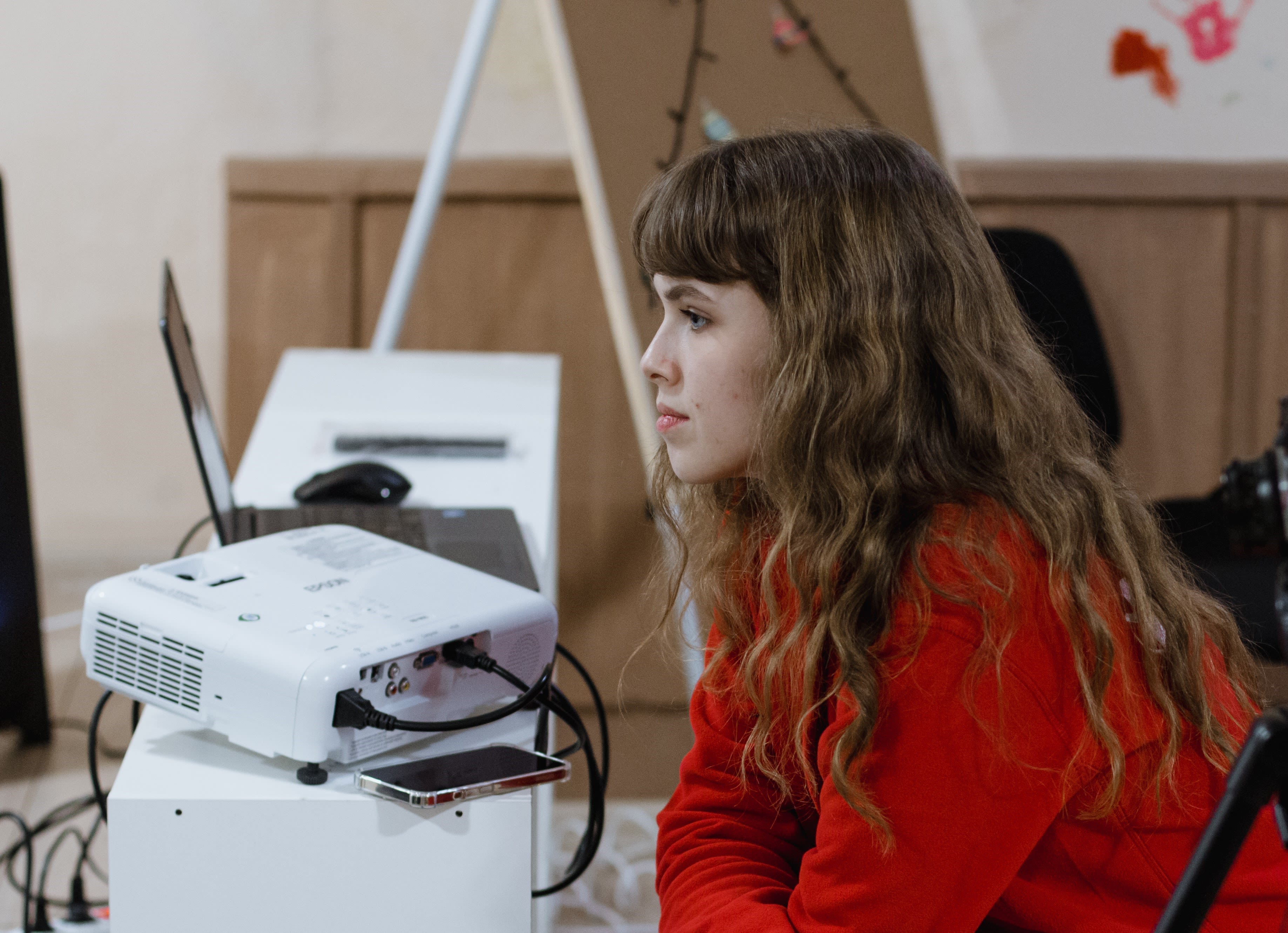
Kateryna at one of Save the Children's Child Friendly Spaces.
Kateryna at one of Save the Children's Child Friendly Spaces.
Those first days were scary and uncertain, but Save the Children managed to mobilise quickly. We rushed to deliver emergency supplies and to get in touch with our existing partners and the children we were supporting prior to the escalation to make sure they were safe. We established relationships with local authorities, volunteers and other possible partner organisations across the country, all to get an understanding of how we could best support children, families, and communities.
Soon, children started to tell us their stories...
Gathered by talented colleagues and brave children, the collection of stories below capture life for children inside Ukraine during one year of war.
Continue scrolling or click the menu along the top to read the stories of children from Ukraine and how Save the Children has been able to help.
Note: All text written in italics are direct quotes from children.
* Names have been changed to protect identity.
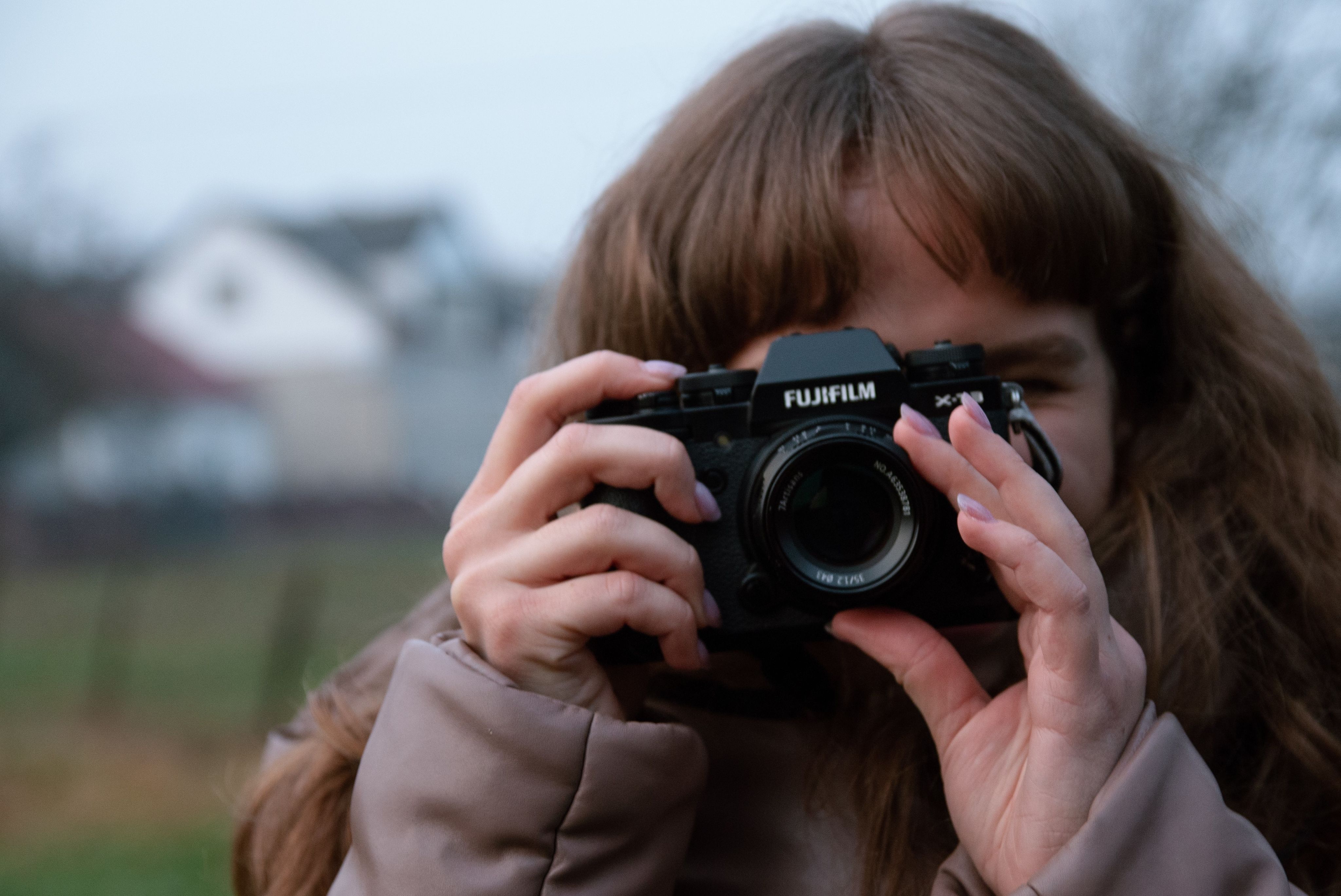
At the beginning...
15-year-old Eva* and 16-year old Sofia* were both in Eastern Ukraine when the explosions started at the end of February.
Click the images to enlarge or play the videos to see and hear Eva and Sofia's experiences through their eyes.

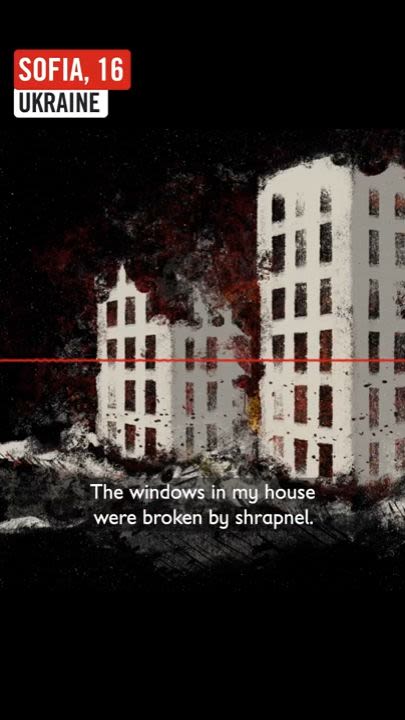
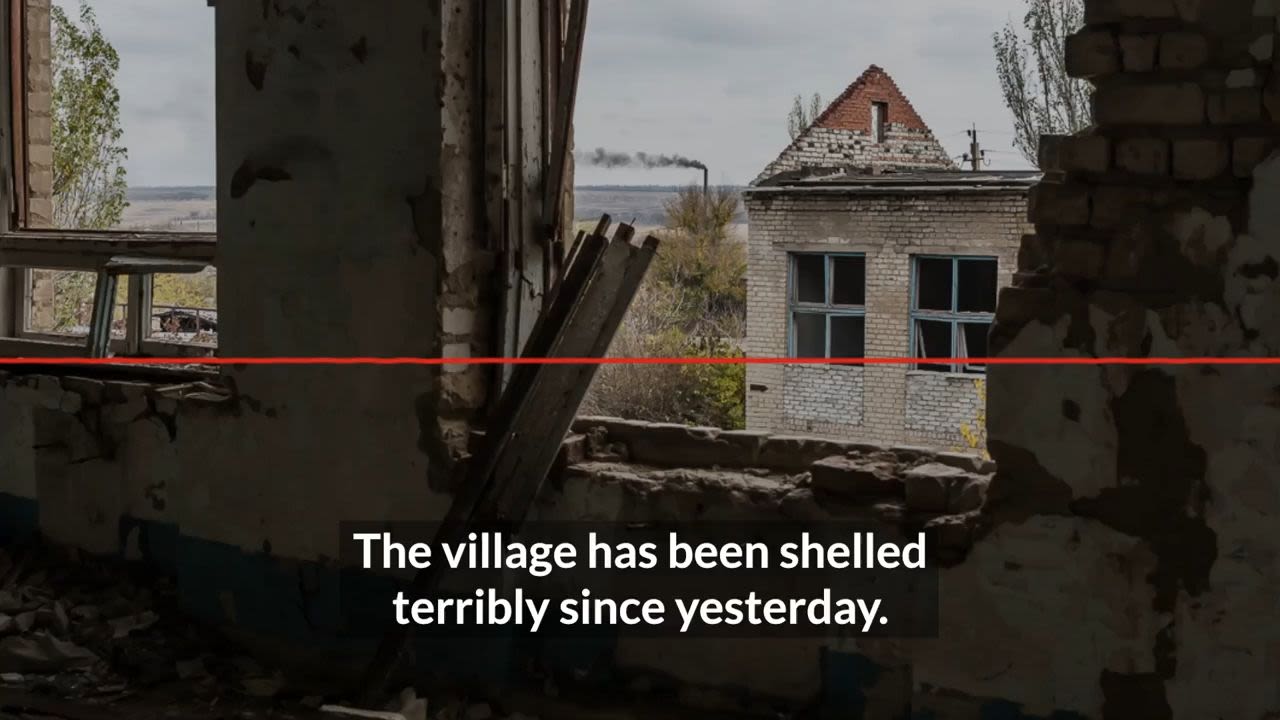






Photos taken by Eva*, 15, showing the destruction in her village near the Contact Line in Eastern Ukraine.
Photos taken by Eva*, 15, showing the destruction in her village near the Contact Line in Eastern Ukraine.
Sofia*, 16, audio testimony about the terrors of war in Ukraine.
Sofia*, 16, audio testimony about the terrors of war in Ukraine.
Eva*, 15, audio testimony of escaping shelling in Eastern Ukraine.
Eva*, 15, audio testimony of escaping shelling in Eastern Ukraine.

Photos taken by Eva*, 15, showing the destruction in her village near the Contact Line in Eastern Ukraine.
Photos taken by Eva*, 15, showing the destruction in her village near the Contact Line in Eastern Ukraine.
Video footage taken by Eva*, 15, showing the destruction in her village near the Contact Line in Eastern Ukraine.
Video footage taken by Eva*, 15, showing the destruction in her village near the Contact Line in Eastern Ukraine.

A damaged playground in Kyiv, Ukraine.
A damaged playground in Kyiv, Ukraine.

A school in a village near Kharkiv, Ukraine, reduced to rubble after shelling.
A school in a village near Kharkiv, Ukraine, reduced to rubble after shelling.

A view of Dmytro's* house that burned down, near Chernihiv, Ukraine.
A view of Dmytro's* house that burned down, near Chernihiv, Ukraine.
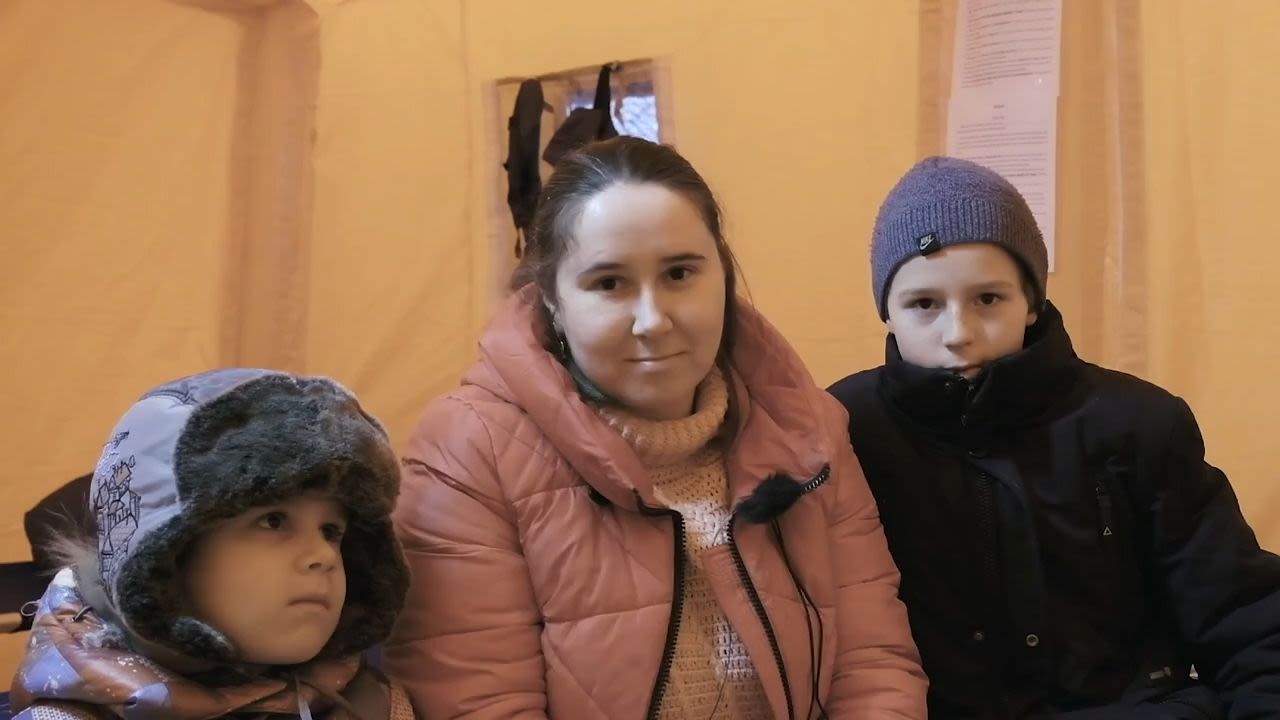
The children that fled

As the war began, people were travelling to the borders any way they could. There were long queues in the freezing snow as people fled to Poland, Romania, Lithuania and other neighbouring countries with not much more than a suitcase. At the beginning the queues could be 40 to 50 kilometres long and people stayed there for days!
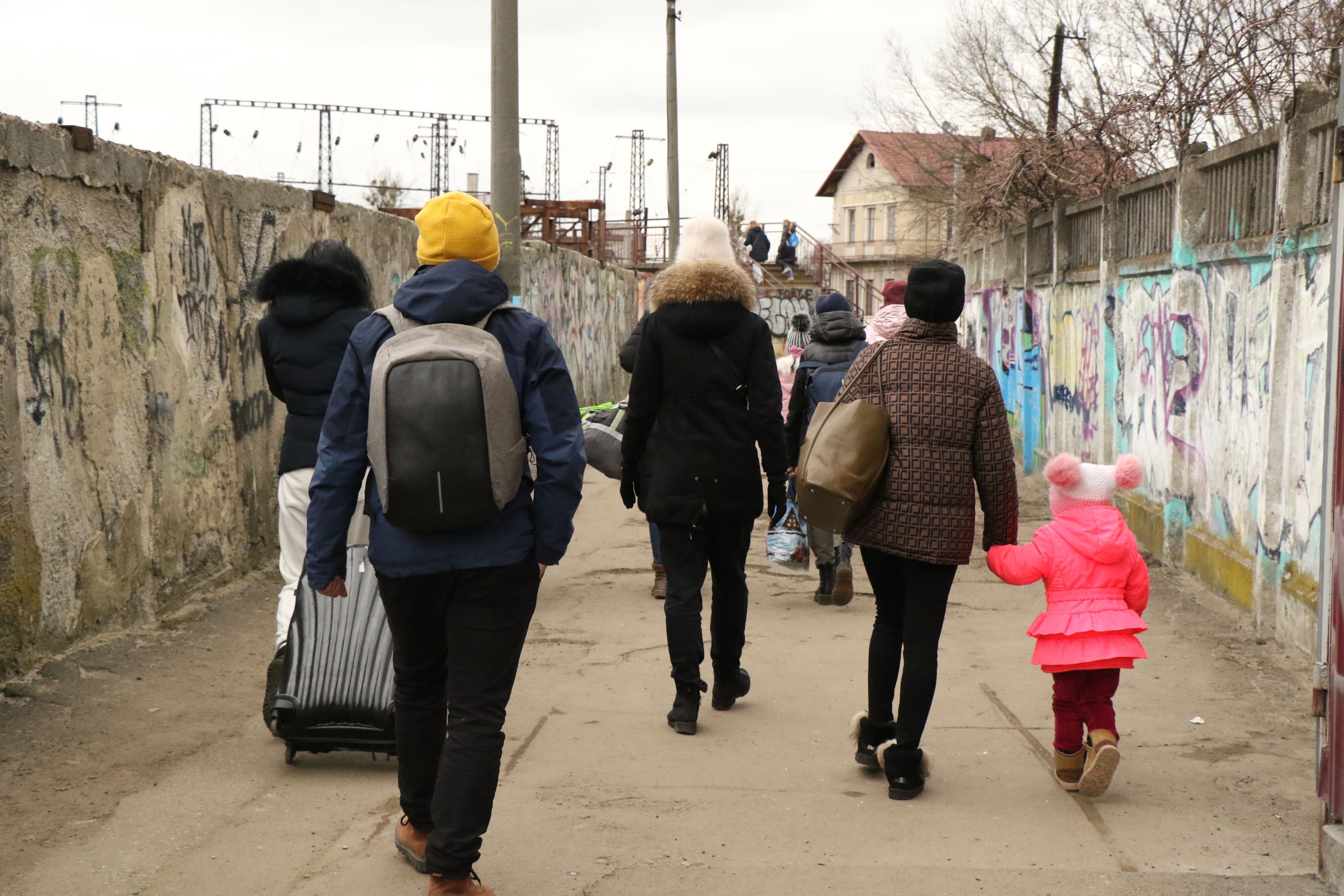
Families in Ukraine, displaced by the conflict, are seen arriving or travelling through Lviv. For many Lviv was just a transit point as they continue on their journey to safety. Many hoped to cross into bordering countries.
Families in Ukraine, displaced by the conflict, are seen arriving or travelling through Lviv. For many Lviv was just a transit point as they continue on their journey to safety. Many hoped to cross into bordering countries.
To give tired families a place to rest and recuperate, Save the Children set up Child Friendly Spaces in refugee centres, train stations and border crossings around Europe.

Our teams in Romania were on the ground, at the border points with Ukraine. They were providing humanitarian assistance to children and their families who were fleeing conflict.
Our teams in Romania were on the ground, at the border points with Ukraine. They were providing humanitarian assistance to children and their families who were fleeing conflict.
This is where we met children like Samad*.
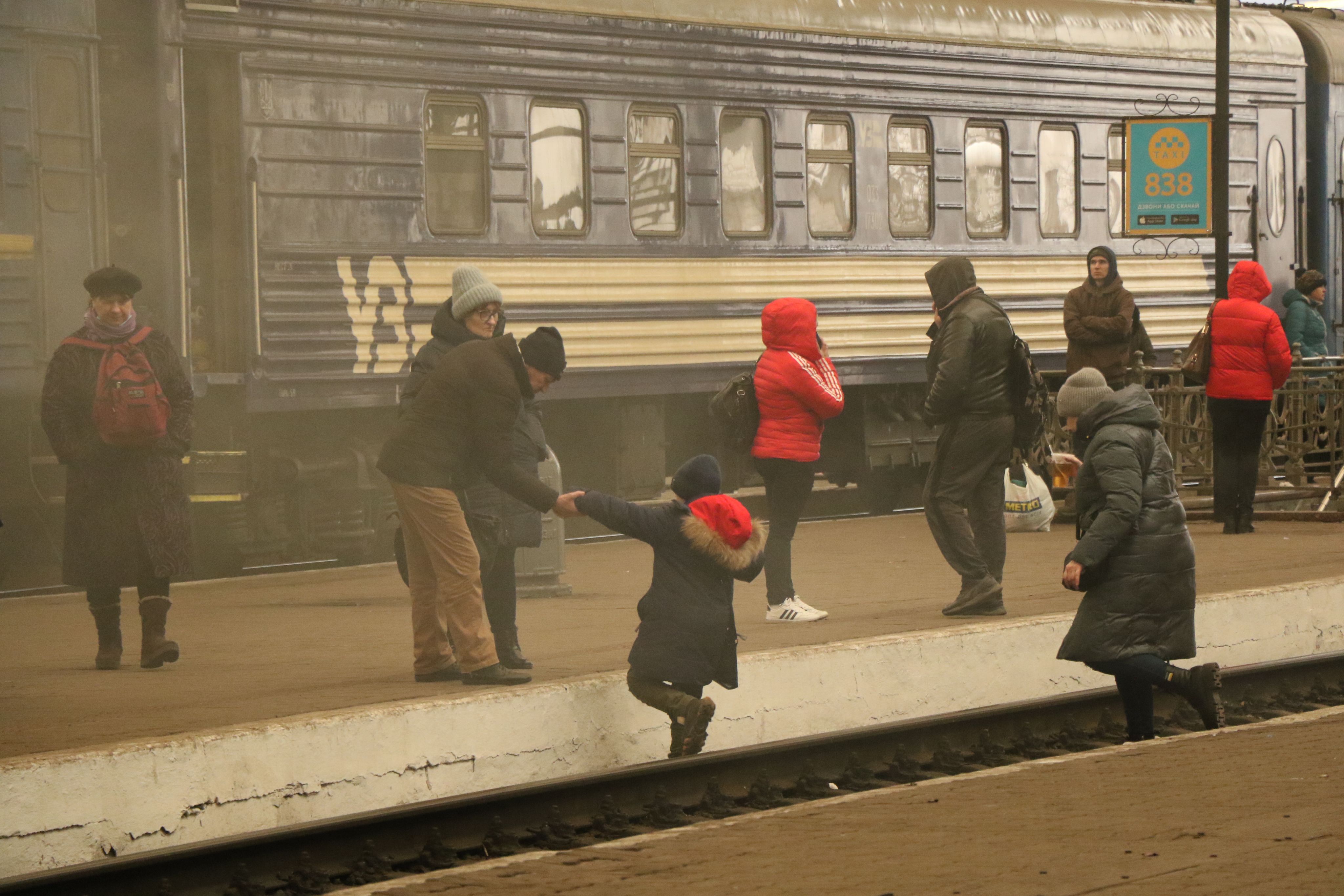

Samad*, 14
At the time, Samad was 14 and in less than one year he had fled two different countries because of conflict - first Afghanistan and then Ukraine. Up until July 2021, Samad lived in Afghanistan, while Samad's father, Mohammad*, lived and worked in Ukraine. When the situation escalated in Afghanistan, Mohammad was able to evacuate his family to Ukraine. They settled into the neighbourhood and were happy to be living peacefully. In his own words, Samad told us:
We left Afghanistan. It was war and it was bombing. A lot of people were killed. For me, it was very hard because I was leaving my school, friends, country, city. It's only been six months in Ukraine and this happened. When I came to Ukraine, the first thing I felt was peace. There was no war.
It was a very big thing for me to come from war and to live in a peaceful place. I made friends. It was very good for me. I come to school and the people were very kind.
But, when the war in Ukraine escalated Samad and his family were in shock. They heard explosions and once again Samad’s father acted quickly, packing everyone into their small car and driving to the Romanian border.
When the war started it was very bad for me because first I left my country from war and then the war started here. So I feel very nervous.
My two friends also left Ukraine and went to Poland. They are also very nervous from this war because they didn't see any war in their life. So maybe it's harder for them than me.
On the way, the roads were congested, and it took 35 hours to reach the border. When they arrived at the checkpoint, they waited for 3 days in a long line of vehicles.
There was a lot of cars because everyone wanted to leave war. It was just like this in Kabul. People want to leave and go to a peaceful place.

Samad walks with Save the Children staff members and his father. Photo: Pedro Armestre/Save the Children.
Samad walks with Save the Children staff members and his father. Photo: Pedro Armestre/Save the Children.
Save the Children ran a Child Friendly Space at the Reception Centre in Northern Romania where Samad and his family were staying. There were dedicated spaces where children could play and recover from the difficult experiences they had been through.
Save the Children continues to provide families, like Samad's, with food, shoes, hygiene items, as well as advice and information.
Donate to save the lives of children living in crisis in Ukraine and countries around the world.
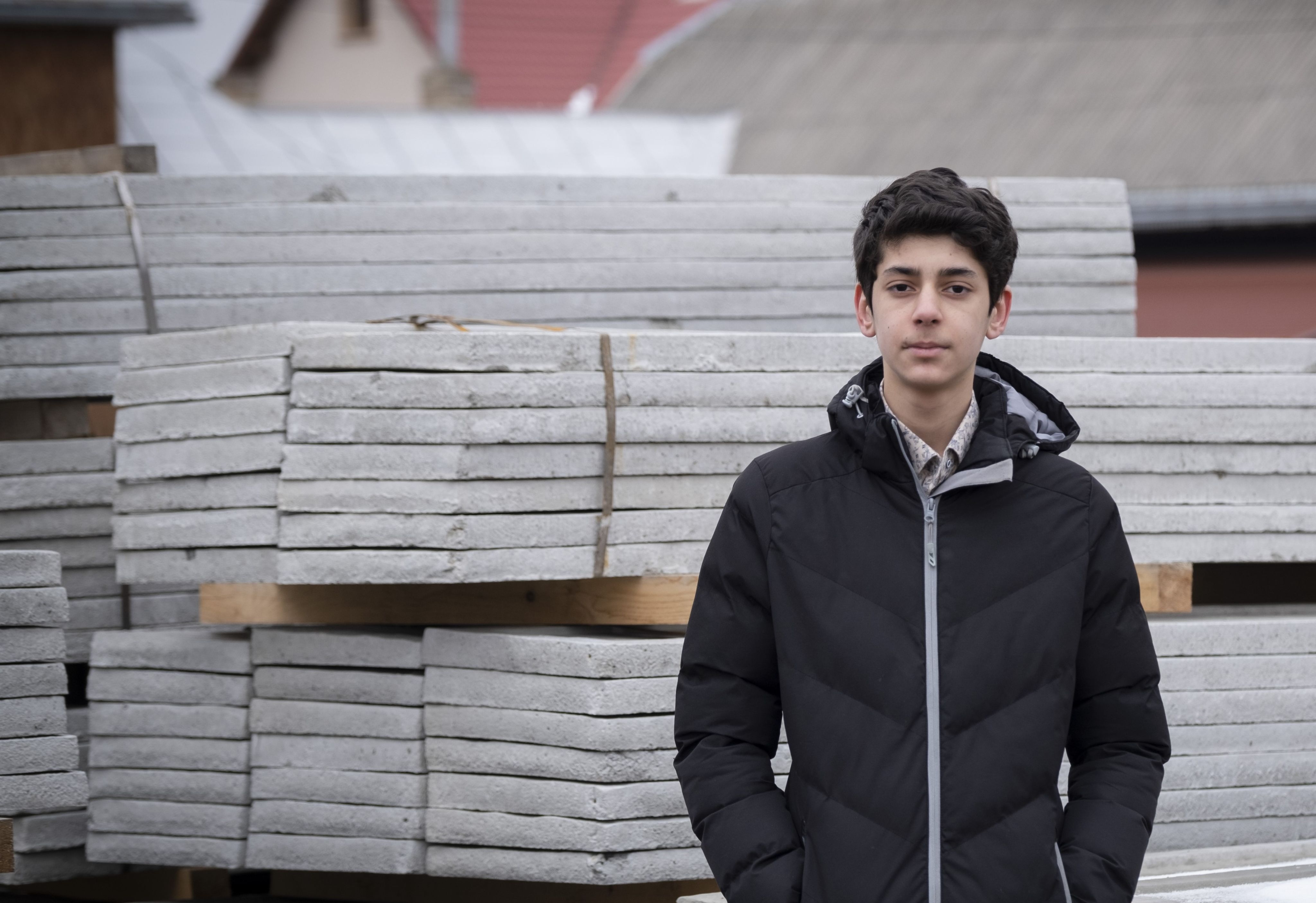
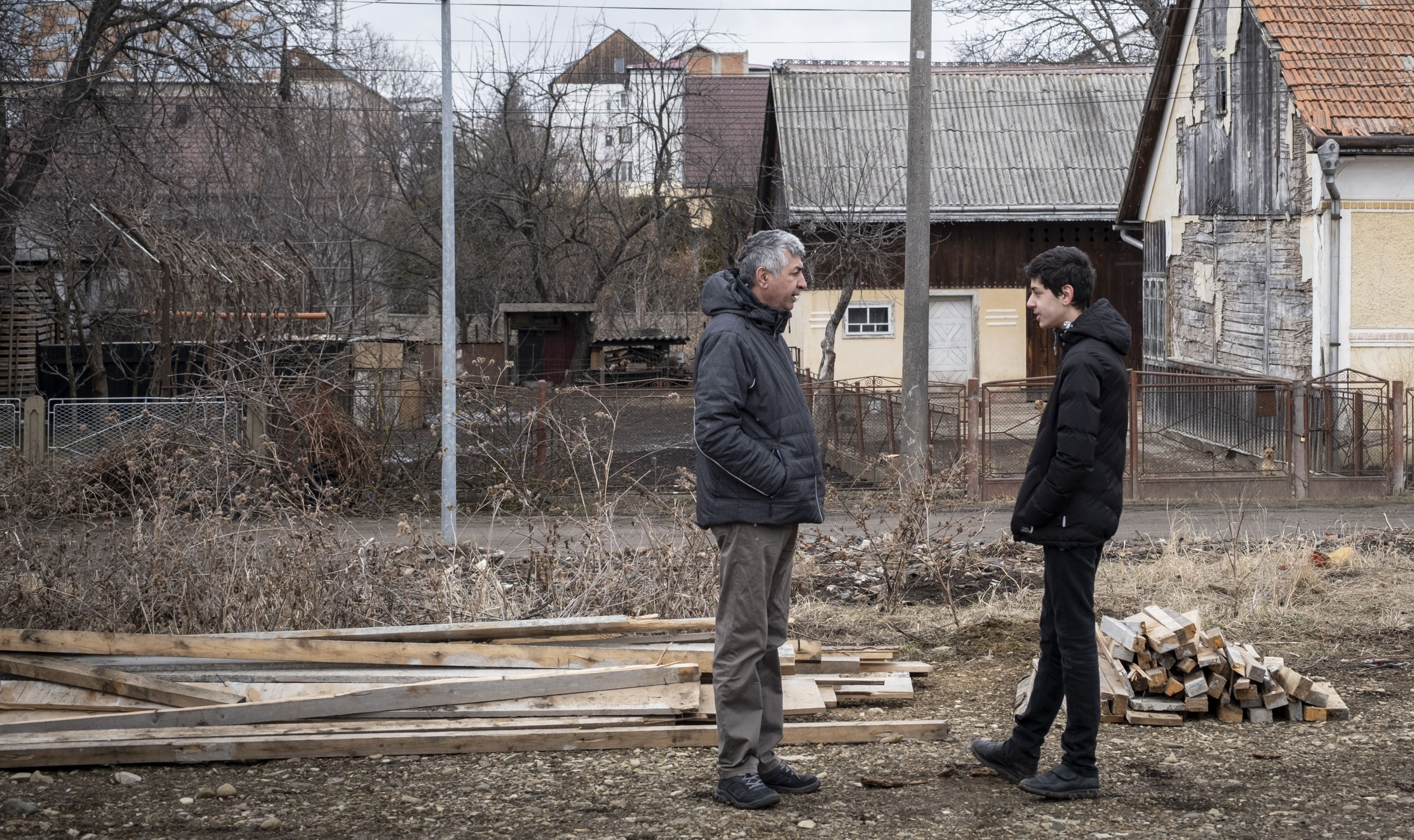

The children that stayed

Families were forced to make impossible choices. Samad's* family left Ukraine, but many others stayed.
As the fighting escalated, so did Save the Children's response. One day I travelled to a cash transfer centre where Save the Children was signing up families who had fled Mariupol, a city that was completely destroyed, where they had to spend weeks in the basements under constant shelling without access to food, water or electricity. It was emotional for me to meet these people and know that we were helping them get settled in a new, safer place.
But, as air raid sirens echoed across towns and cities, thousands of children were sheltering for long hours in bunkers, with nothing to occupy or distract them from feeling scared for their lives or from flashbacks to missile attacks. So, we started to work with partner organisations to deliver 'bunker kits'.

An example bunker kit. It contains toys, games and arts and crafts to promote play and learning. The kits also include mental health activities to help children manage their stress and find ways to communicate how they are feeling. Photo: Kateryna Alieko/Save the Children.
An example bunker kit. It contains toys, games and arts and crafts to promote play and learning. The kits also include mental health activities to help children manage their stress and find ways to communicate how they are feeling. Photo: Kateryna Alieko/Save the Children.
These were boxes full of toys, craft supplies, games and activities, and were given to children in areas where there was intense fighting. Anything to give them a little spark of normalcy in a dark time. It was wonderful to see children be just that - children, despite the environment that surrounded them.
This is when we met children like Nastia*.
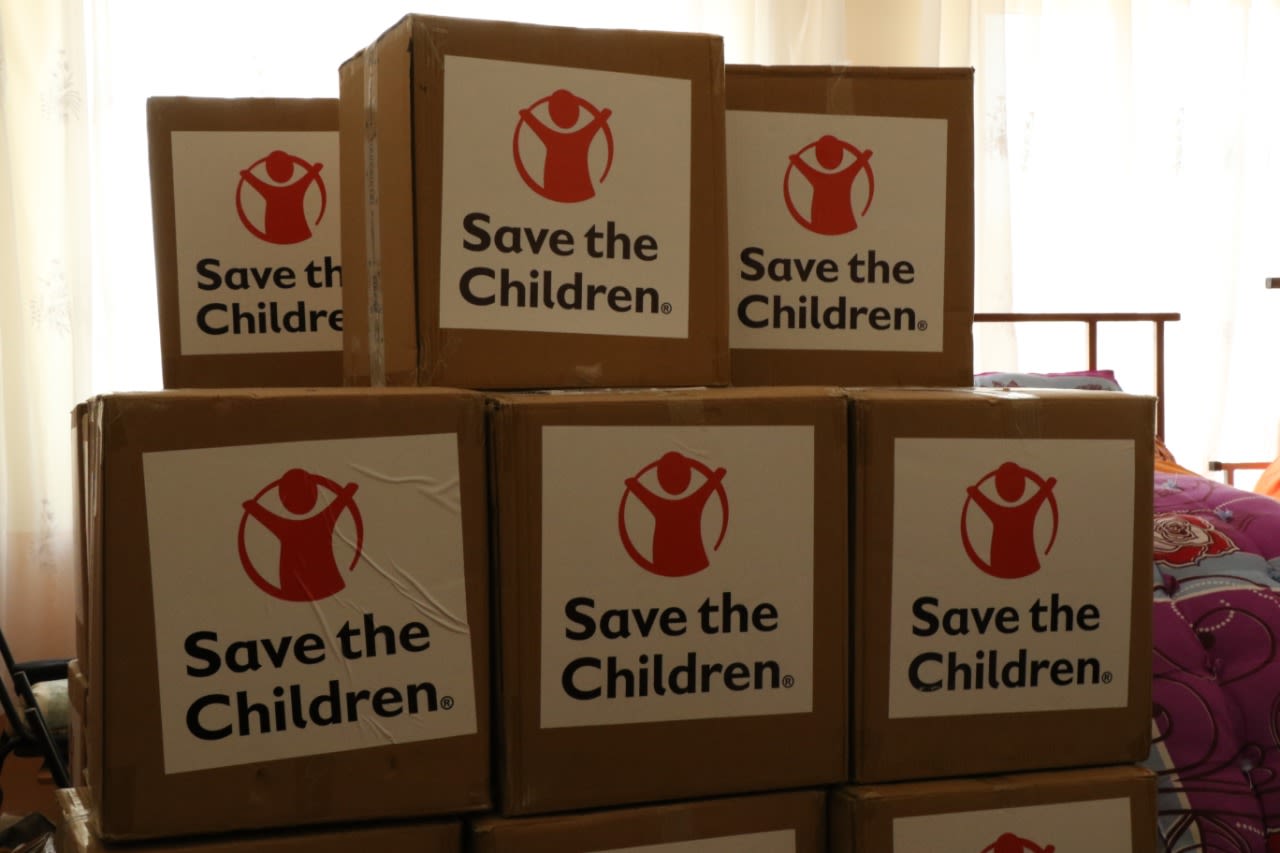

Nastia*, 13
Nastia is from the Donetsk region of Ukraine. She was living in a family run children's home with her foster family when the conflict escalated. She tells us:
There were air raid sirens every day… Explosions not far from us. I was worried about my family.
Three months on from the escalation of the war, Nastia and her family were living in a school gym and being supported by Slavic Heart, one of Save the Children's partners.
My most important wish is to come back home, and that there is no war. I would ask for the war to be over and everything to be back as it was.

Nastia looks at toys from the bunker kits with her foster brothers. Photo: Kateryna Alieko/Save the Children.
Nastia looks at toys from the bunker kits with her foster brothers. Photo: Kateryna Alieko/Save the Children.
Nastia and her foster siblings received bunker kits. Head of Slavic Heart, Save the Children Partner, Olga* shared the importance of these bunker kits for the wellbeing of children:
Very often the families of these children, cannot leave. It is very important to support the children who are right there, right in the war zone.
Those children who, unfortunately, are still in the war zone, now will have at least some moment of joy, at least some kind of smile.

Olga*, from Slavic Heart organisation, holds a toy from the bunker kits. Photo: Kateryna Alieko/Save the Children.
Olga*, from Slavic Heart organisation, holds a toy from the bunker kits. Photo: Kateryna Alieko/Save the Children.
Save the Children also provided cash assistance to families living in the shelter where Nastia was staying.
Slavic Heart are a Save the Children partner and support children through psychosocial programmes, Child Friendly Spaces in shelters, distribution of food, non-food item kits, toys and games.
Donate to save the lives of children living in crisis in Ukraine and countries around the world.
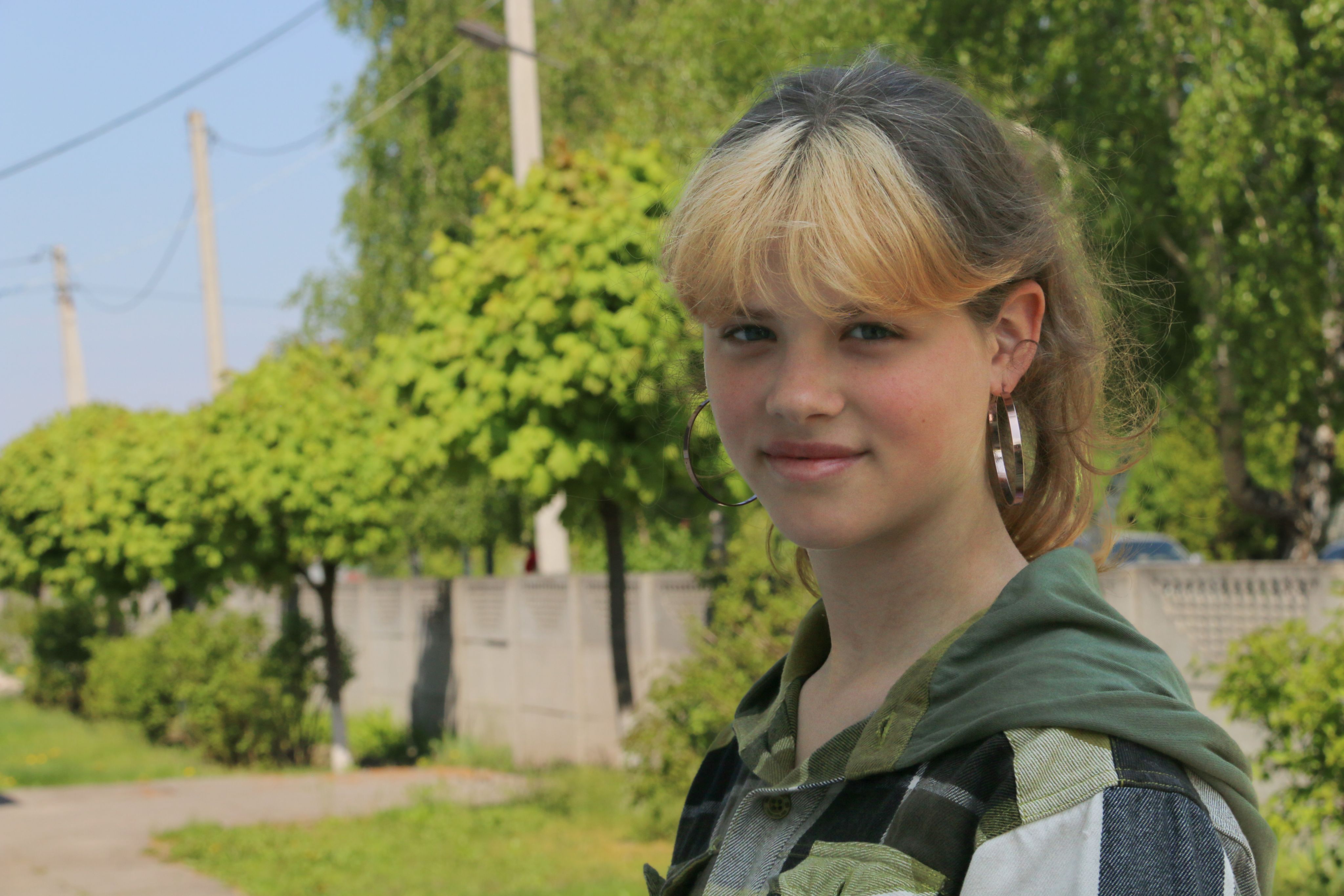
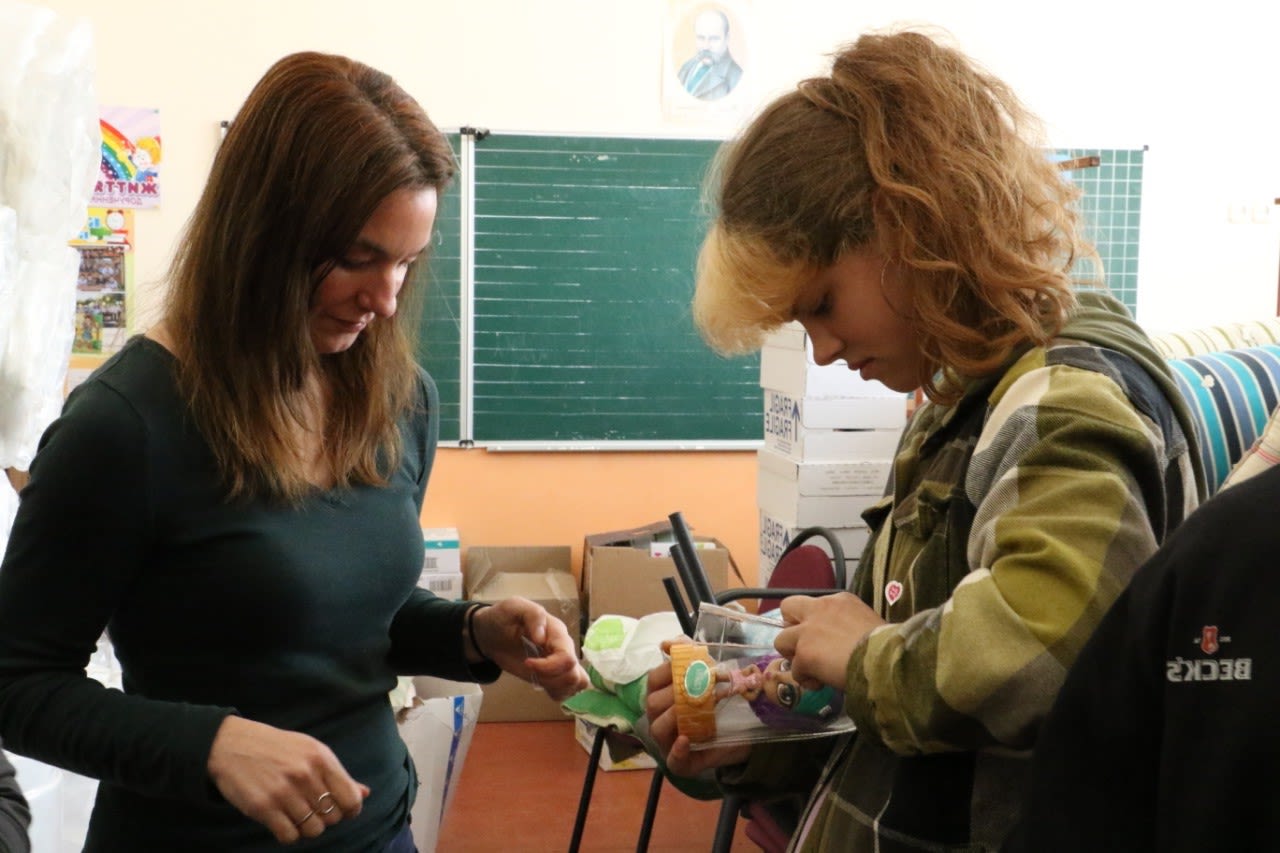
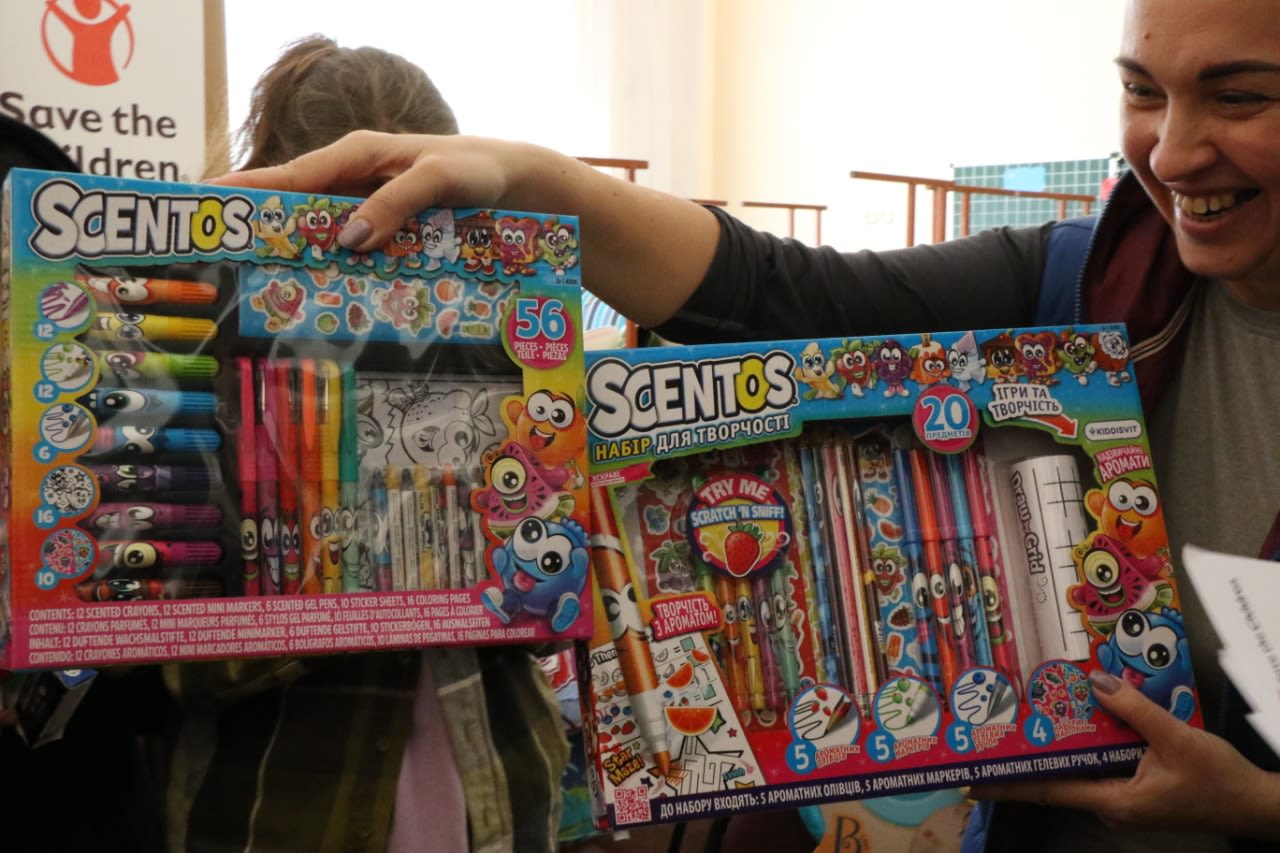

A safe place to play

As the war continued our teams' efforts didn't stop. Save the Children worked closely with partners, communities, and authorities to make sure all children and families impacted by this crisis had the support they needed, just like we've been doing since the war first erupted in 2014.
Save the Children has been distributing humanitarian aid and providing support to thousands of families, whether they have stayed in Ukraine, crossed the borders to Lithuania, Romania or Poland, or travelled across Europe to countries including Denmark, Finland, Germany, Italy, Netherlands, Norway, Spain, Sweden, Switzerland and the UK.
As part of our response, Save the Children has set up Child Friendly Spaces inside Ukraine and across Europe. These spaces are important to allow children, like Kristina*, to be themselves, start to recover and have a safe place to play.

Kristina*, 14 months, is held by her mother Irina*, 36 in the Child Friendly Space, Poland. Photo: Laura Hewison/ Save the Children.
Kristina*, 14 months, is held by her mother Irina*, 36 in the Child Friendly Space, Poland. Photo: Laura Hewison/ Save the Children.
At Child Friendly Spaces families can also receive cash support as well as essential items such as food, hygiene products, clothes and diapers.
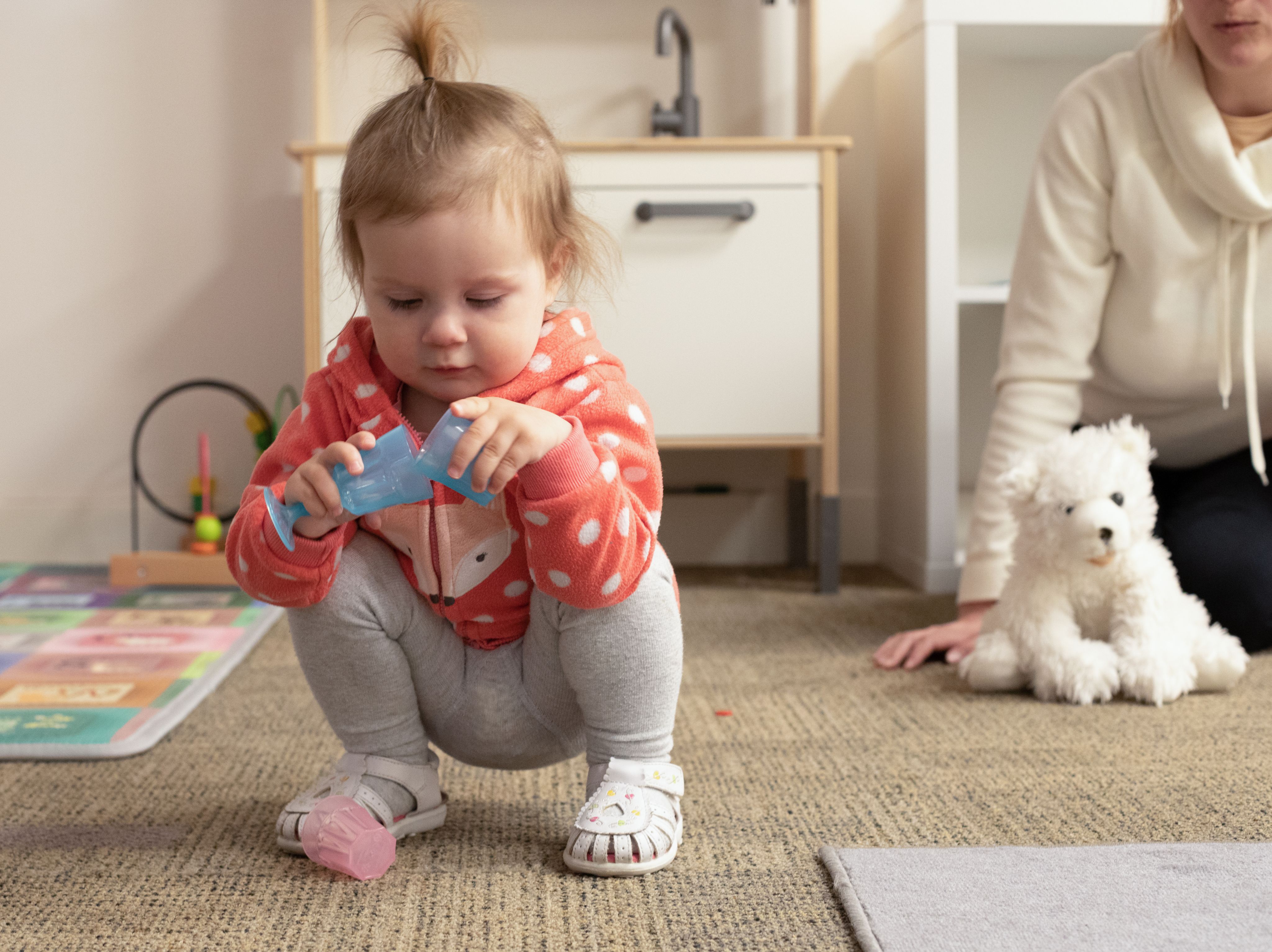

Emergency supplies

Everywhere we went, we saw the scale of families' needs. People had fled with nothing, or stayed and tried to weather the storm. Homes were damaged, water and electricity was scarce. We delivered water in big containers, as well as food, emergency supplies, blankets, mattresses and cash assistance.
Giving cash was helpful because the needs of each family are unique. The war is different for every Ukrainian. Our cash assistance allowed families to buy whatever they needed – medicine, food, repairs for their home.
In the last 12 months we've provided over 27 million dollars of cash assistance to families like Mariia's*. By the end of February we are on track to have reached over 100,000 people with cash assistance!
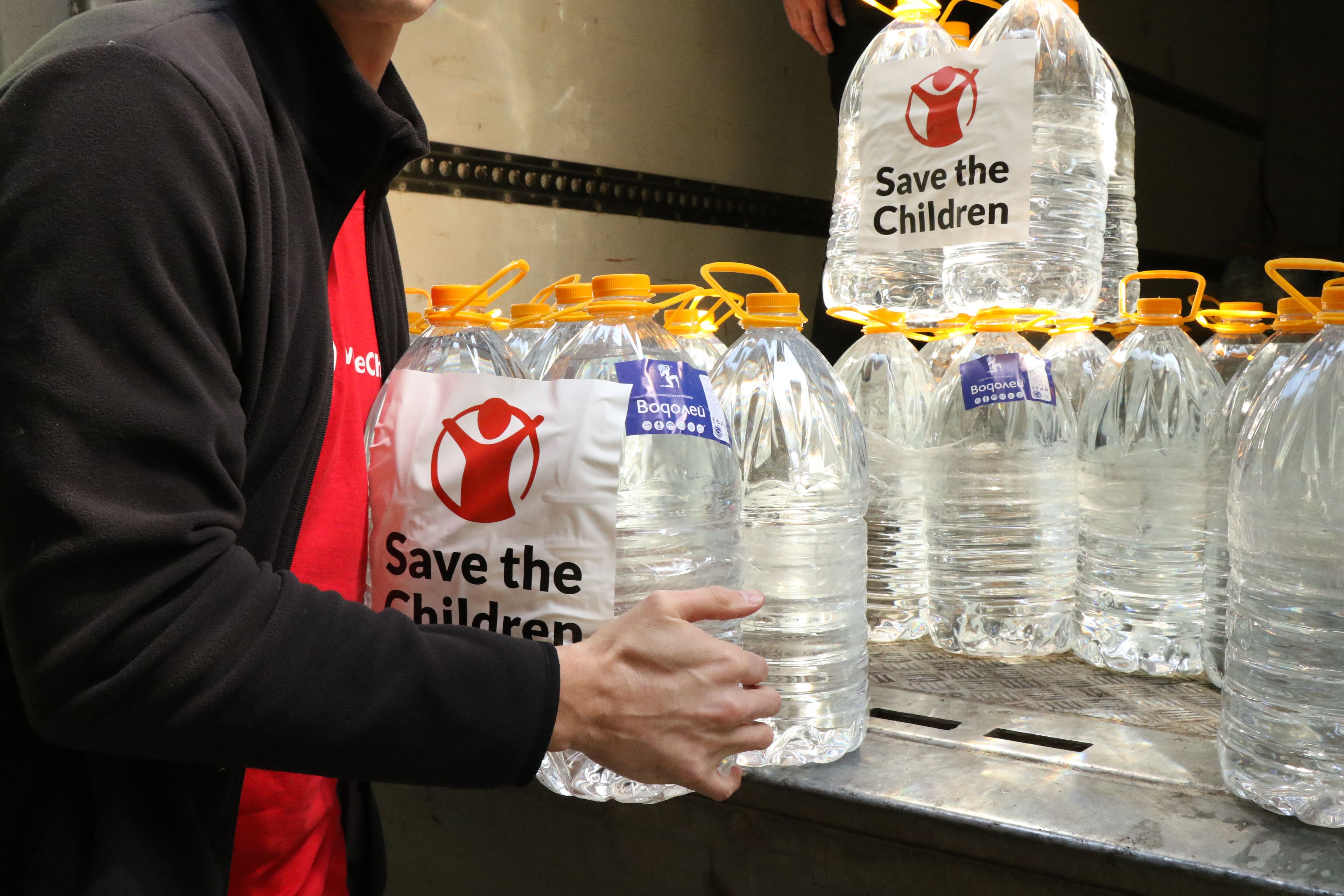
Water delivery in Ukraine, Donetsk region. Photo: Save the Children.
Water delivery in Ukraine, Donetsk region. Photo: Save the Children.
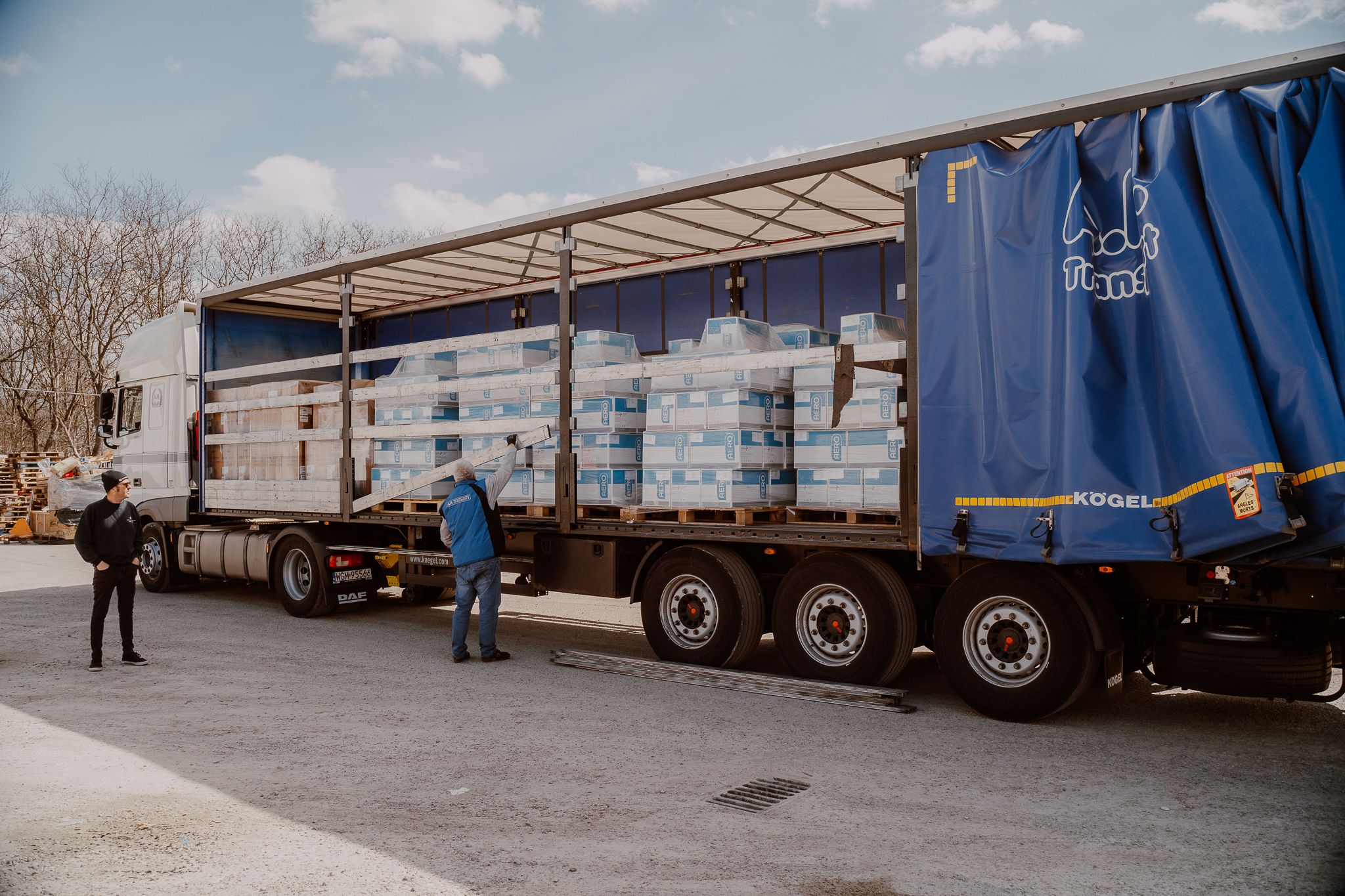
Mariia*, 13
Mariia's family tried to stay in their home town for as long as possible, but when fighting came close to their home, Mariia's mother Olena*, took her children to the station and they managed to board a small electric train to Lviv. From there the family went further west.
In her own words Mariia told us:
When we left our home region, I was glad that we would not hear those explosions. But I was sad that we were leaving home.
The family took shelter in a school and they have been living there since early April. The family all live in one classroom.
Now we live in a different atmosphere, there are a lot of people here. You go out into the corridor, there is a constant rumble, noise… There are only two showers for about 60 people.
We are all together. I know that even if we return, even if we stay, we will all be together.
Physically I feel okay, but it's emotionally it's difficult.
Save the Children has provided the family with cash assistance. Olena used it to buy medication for Mariia, other essential supplies and is saving some for the future.
Olena tells us:
The big financial support from Save the Children is the only money we received. This assistance is very important for us. First of all I bought the essentials for children, because we left our home with only one travel bag. And most importantly – I resumed treatment for my child.

Olena, mother of two, in the classroom where she is now living. Photo: Kimberley Gardiner/Save the Children.
Olena, mother of two, in the classroom where she is now living. Photo: Kimberley Gardiner/Save the Children.
My daughter [Mariia] has a chronic disease that gets worse because of the stress. And, of course, due to all the current circumstances, her condition has deteriorated significantly. During the war at home, we could not control our daughter's condition, so as soon as we received financial aid, we were able to resume treatment. This money is priceless for us.
Donate to save the lives of children living in crisis in Ukraine and countries around the world.
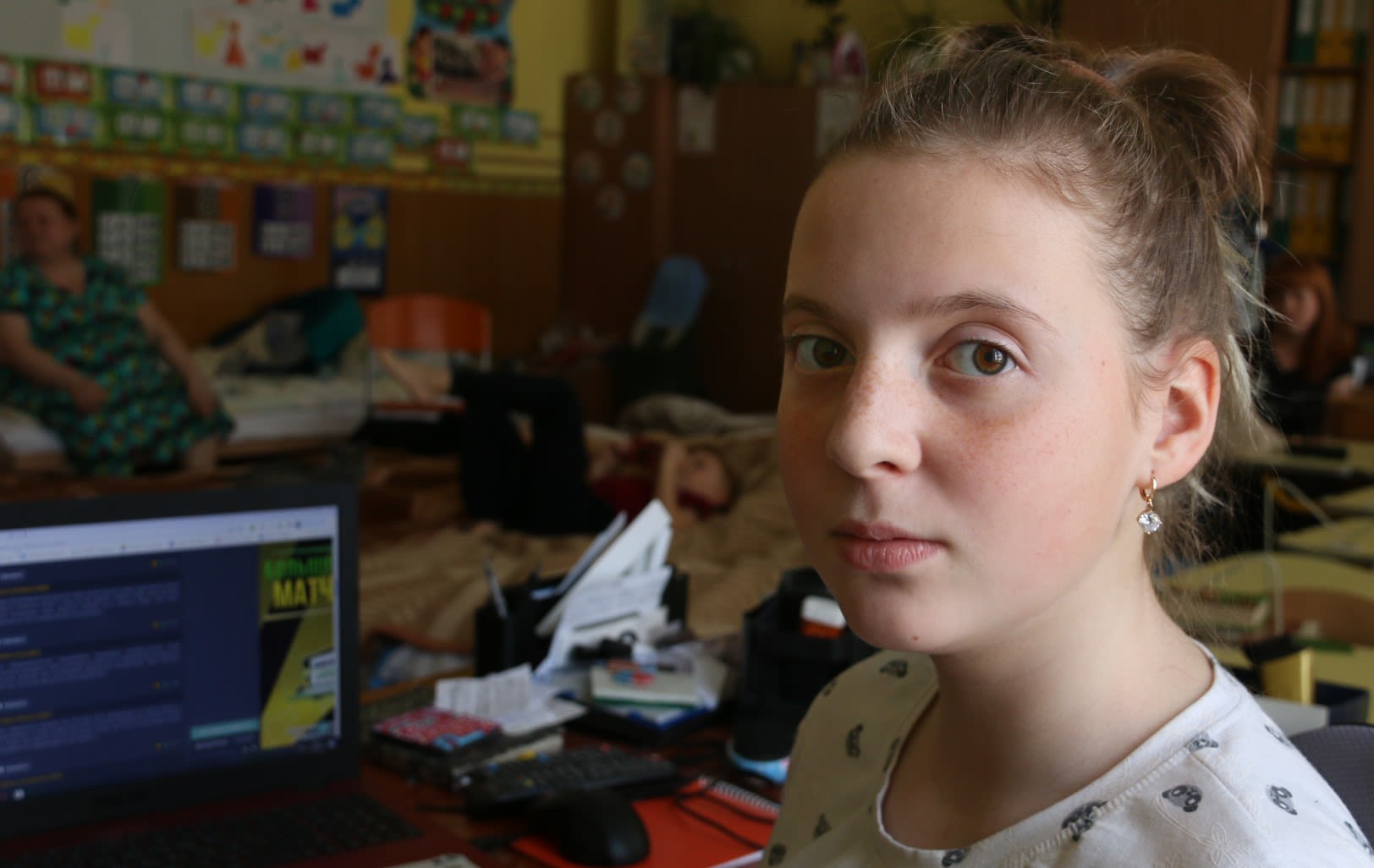
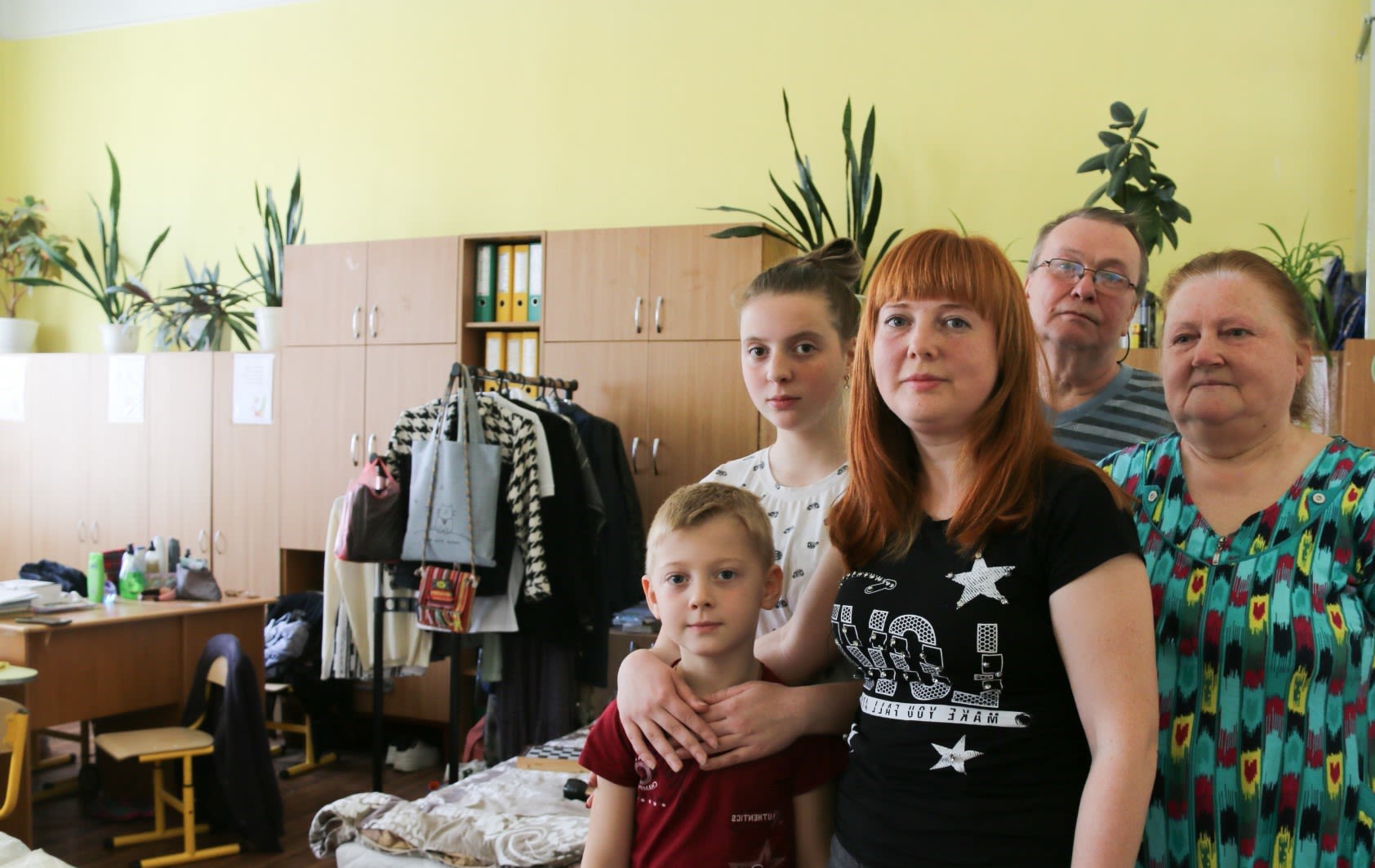

Summer camps

The summer months quickly approached and we wondered if children would be able to go back to school in Ukraine in the new term.
In Ukraine, summer is normally a time for children to make the most of the beautiful weather and play outdoors but this year was different. Lots of children were displaced and away from their friends, and it was noticeable through our mental health support that they needed safe places to play, have fun and have a moment of normality in their lives.
Save the Children set up and supported summer camps across Ukraine and neighbouring countries that gave children space to play sport, do crafts, activities to support their mental health and socialise with children in their local community.
Psychologists also ran sessions to help children deal with the distress of displacement and war and support their wellbeing.
In conflict situations, we know that surviving a war can just be the beginning – the effects on a child's mental health can be ongoing.
At these summer camps, we met children like Daria*.
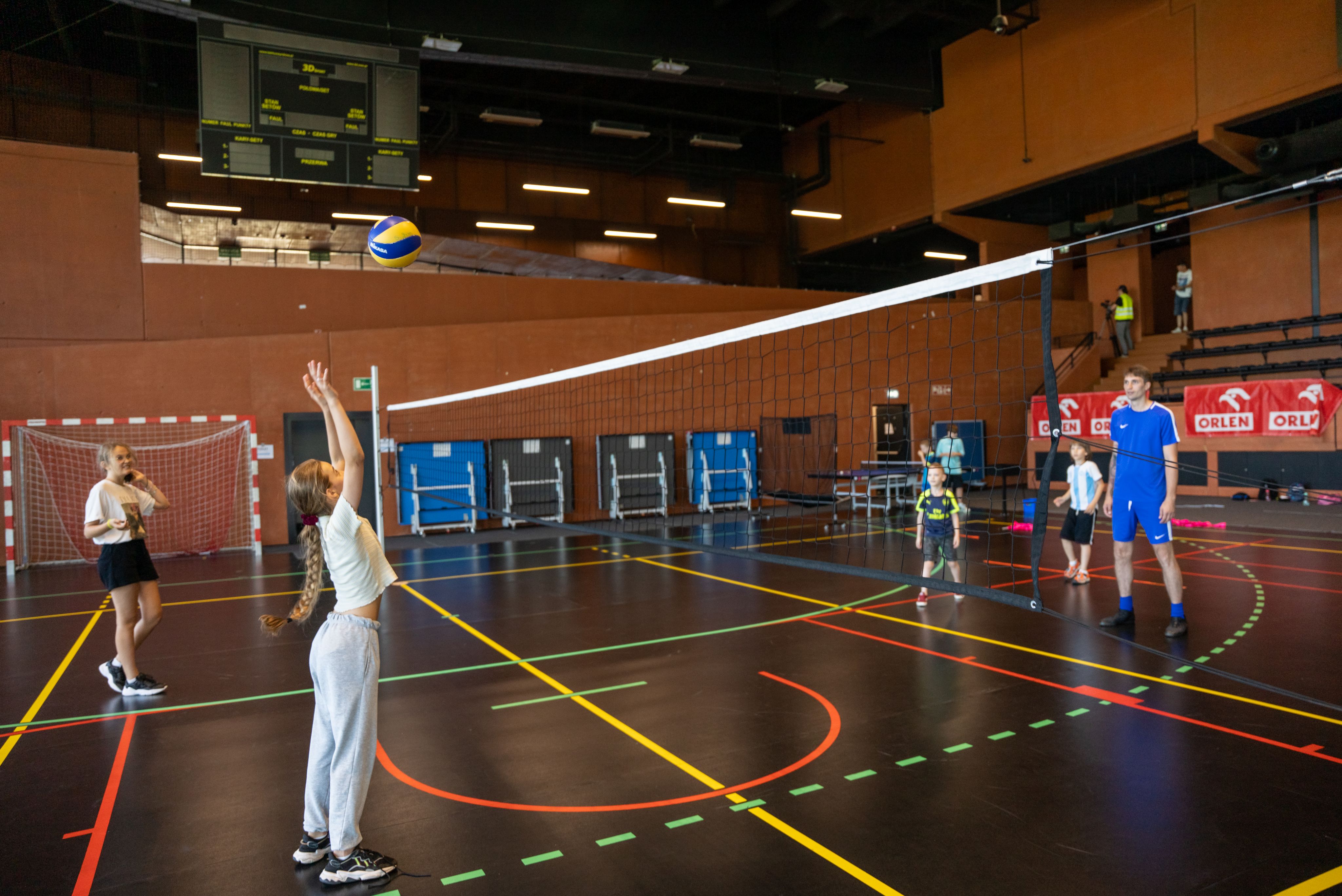
Daria*, 12
Daria and her mother fled to Poland. Last summer, Daria attended a summer camp for children from Ukraine supported by Save the Children. Children from Poland also attended the camp to help the refugee children make new friends in their community and learn the Polish language. In her own words, Daria told us:
At the beginning, I was anxious because I didn't know anyone.
I am happy because there are a lot of sport activities. What I like most is playing volleyball.
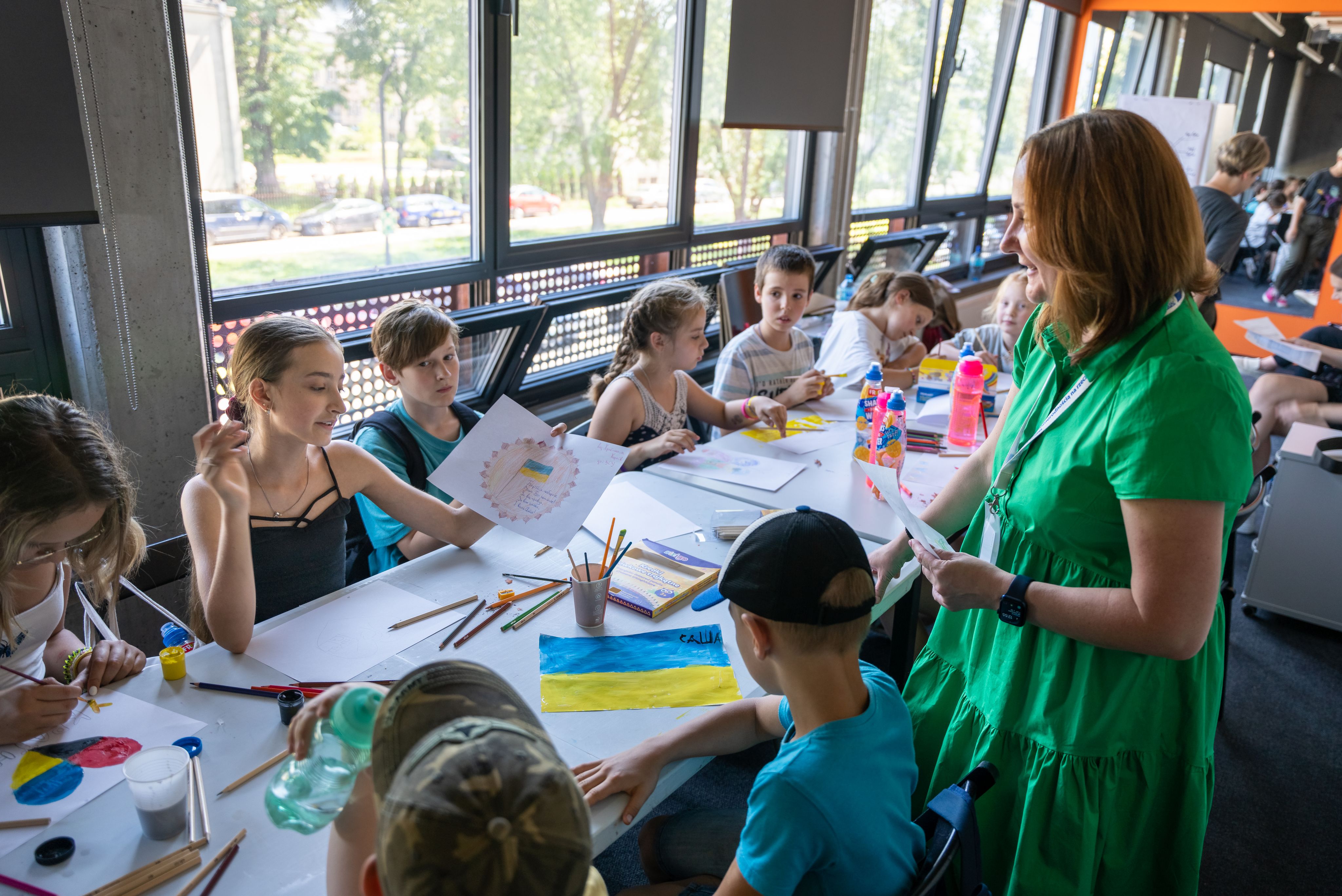
Maria* the Psychologist conducts a session with the children. Photo: Paul Wu / Save the Children.
Maria* the Psychologist conducts a session with the children. Photo: Paul Wu / Save the Children.
With the psychologist [Maria] we talked a lot. We also got a piece of paper with a name of an emotion on it. Then we had to draw the emotion. Then we sat in a circle, and we had to demonstrate the emotion.
I'd like to say thank you to the people who made this camp possible for giving us the opportunity to get to know new friends, play games and have a good time.
The best thing in the camp was getting to know new friends. If I don't return to Ukraine, I will keep in touch with them here. If I do, we can write to each other.
Donate to save the lives of children living in crisis in Ukraine and countries around the world.
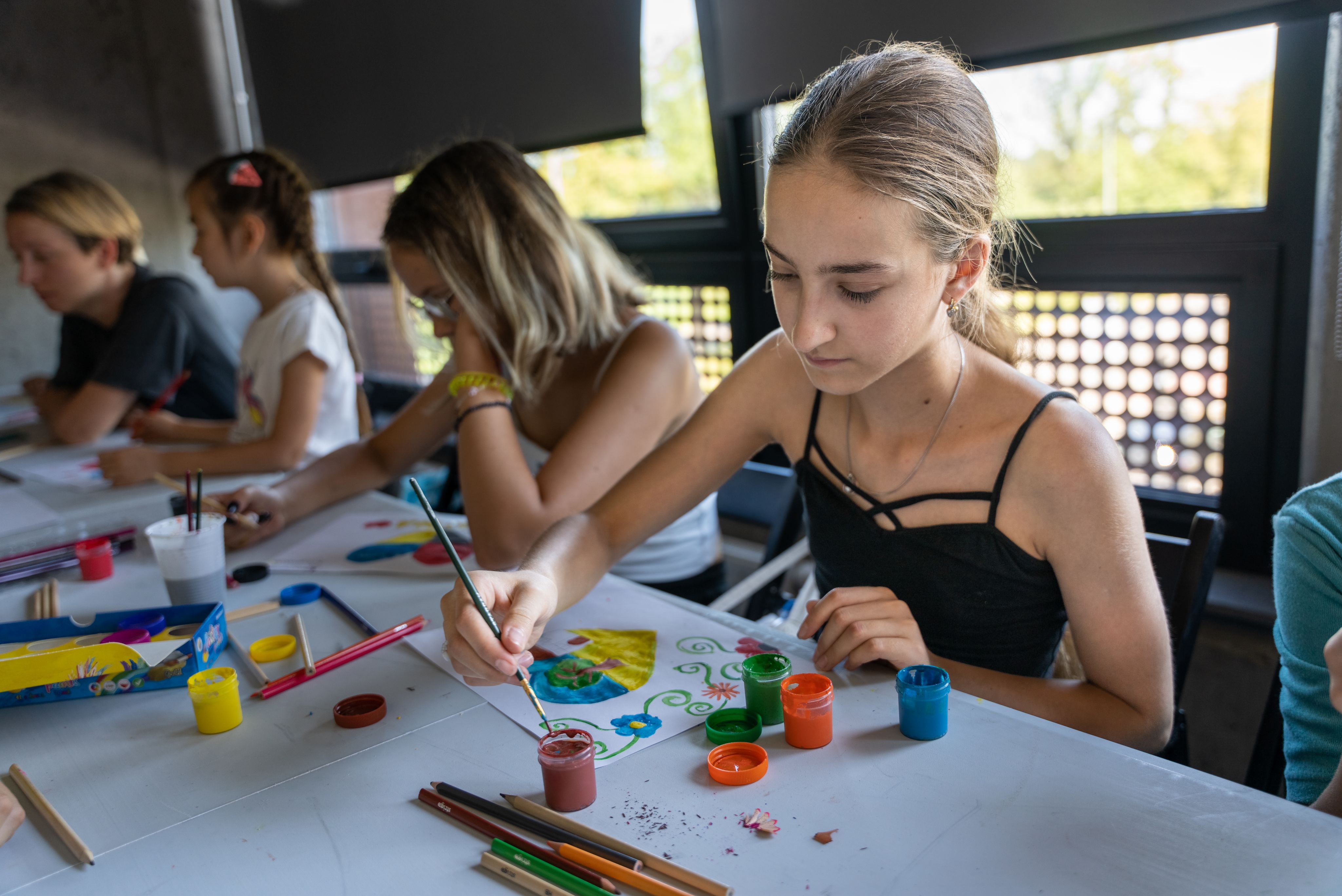
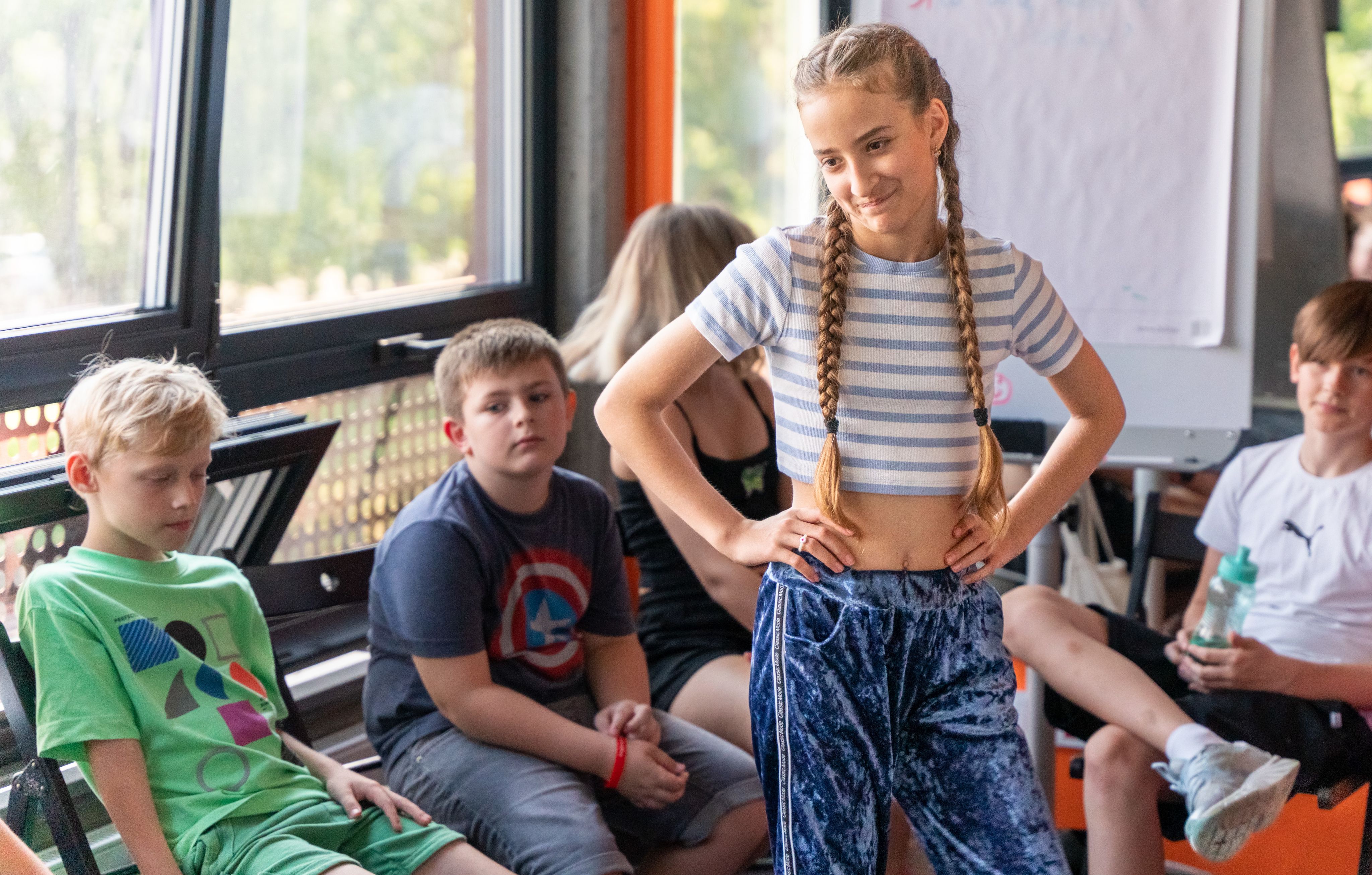

Back to school

The war dragged on. I couldn't believe the destruction, to say nothing of the enormous civilian casualties, we were seeing as we drove across the country.
Spaces that were traditionally safe havens of childhood, such as playgrounds and schools, were left blackened and burned or destroyed completely.
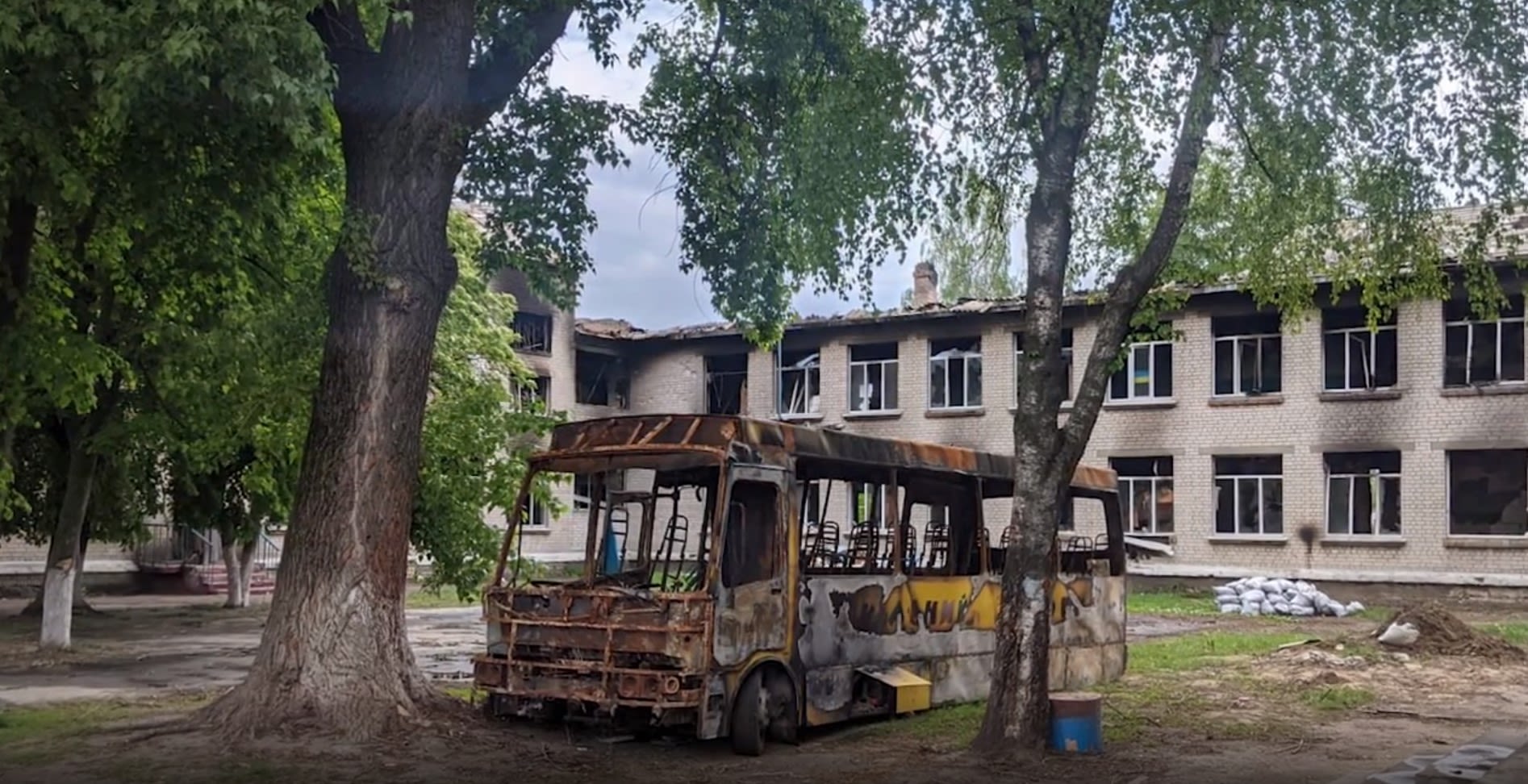
Attacks on schools in Ukraine. Photo: Save the Children.
Attacks on schools in Ukraine. Photo: Save the Children.
Save the Children has supported 50 schools and 83 Digital Learning Centres across Ukraine and Europe, so children could keep up with their valuable education, but the disruption to children's lives was all too obvious.
My colleagues went to a refugee centre in Chernivtsi where we took hundreds of school bags filled with education supplies. The children here were all living in a disused school gymnasium, their little beds pulled up close to each other with colourful rugs adorning each one. Children like Olesia* were so excited to receive the new books, pens and craft supplies.
When you're forced to flee your home in such a hurry, you don't think to take your school bag.
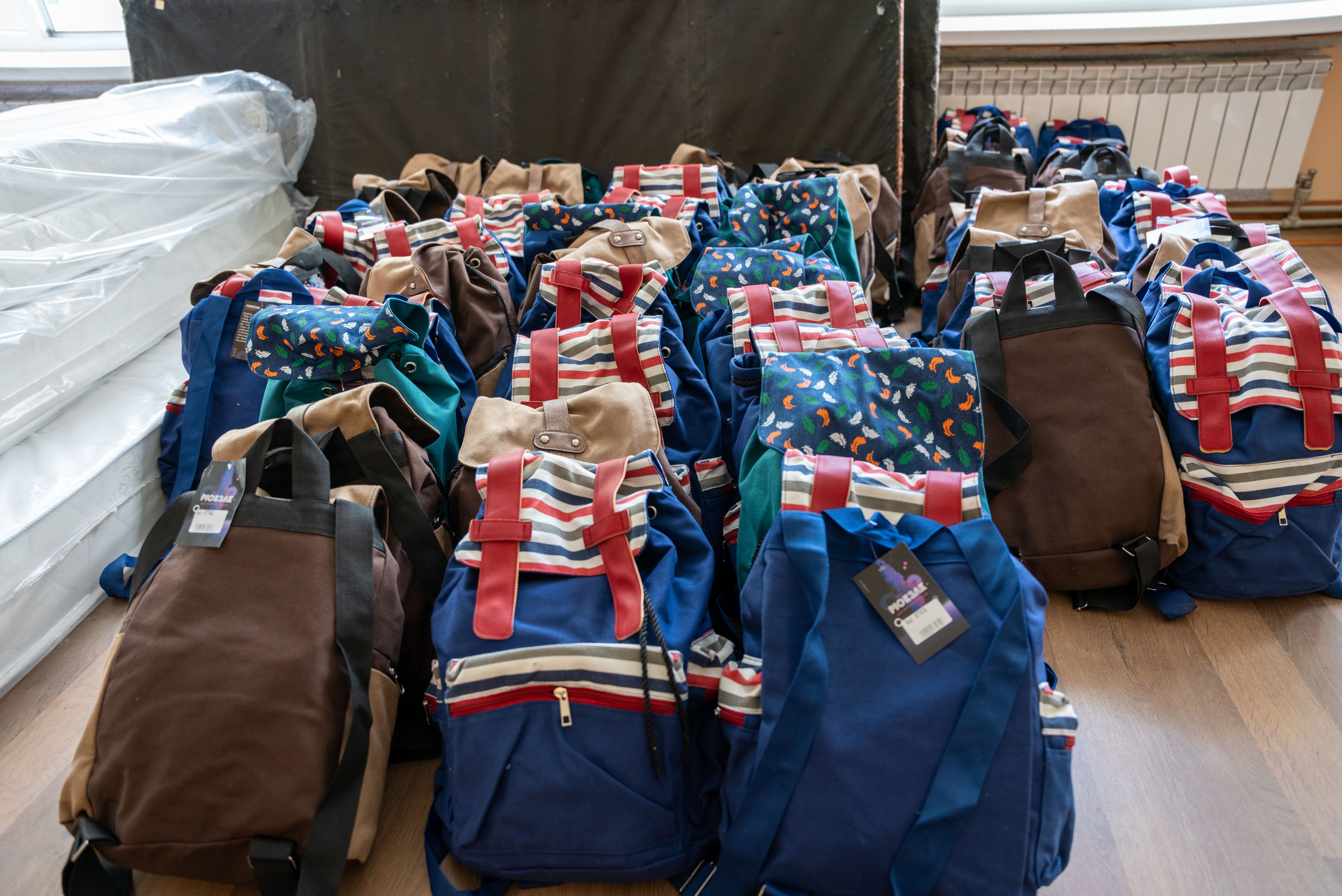
Olesia*, 10
Olesia* is 10 and fled her home town of Odessa with her parents, and siblings. Towards the end of summer, Olesia and her family were living in temporary accommodation at a school in Chernivtsi. Beds were placed in the gym, where Olesia and her family slept alongside around 40 other people.
Olesia was excited to receive a backpack full of stationery from Save the Children to continue her learning whilst she was unable to return to school. In her own words:
There's a lot of things here. Markers, coloured paper, coloured cardboard, sketchbook, markers, multi-coloured pens, regular pens and pencils. I received the prettiest backpack. Most of all I liked the pencil case in the backpack.
I love to do is arts and crafts. I have many friends here. Either I'm sitting reading my favourite book or I go for a walk with friends.
When we arrived in Chernivtsi, we did not have many things. When they gave me a backpack, I thank them or hug them. I am very grateful for the backpack.
Save the Children continues to deliver school and craft supplies to children impacted by the war in Ukraine to ensure they can keep learning. Backpacks full of stationery have been given to pre-school and school aged children who have been forced to flee their homes because of conflict.
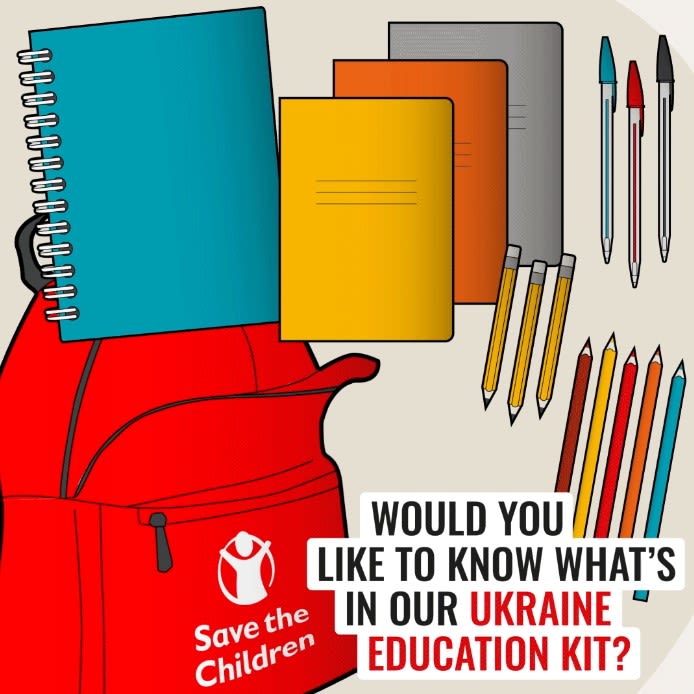
What's inside our Ukraine education kits?
What's inside our Ukraine education kits?
Donate to save the lives of children living in crisis in Ukraine and countries around the world.
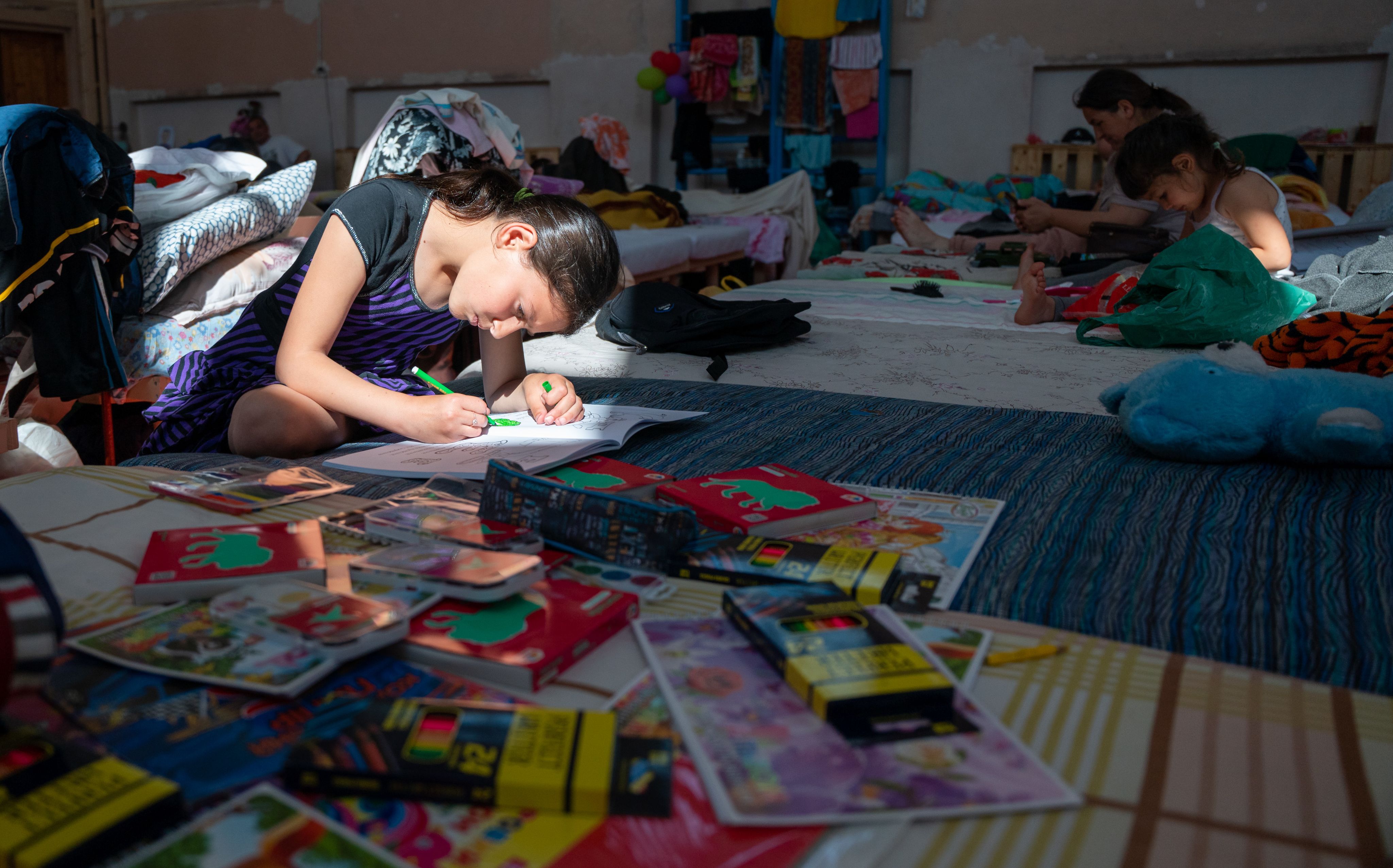
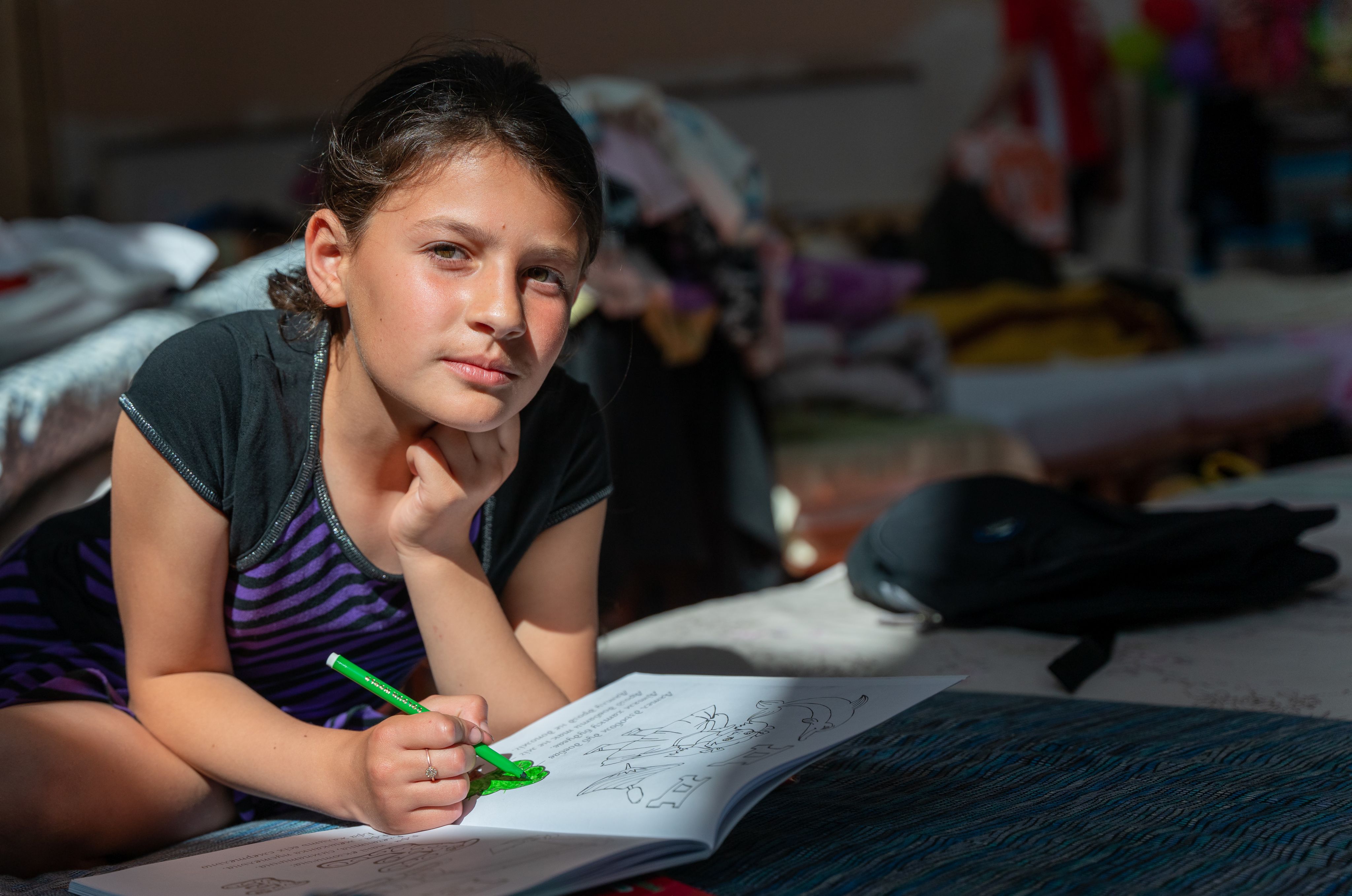

Christmas away from home

Suddenly, it was winter again. Both emotionally and physically it was hard. Wearing the same sweaters we wore on the 24th February and feeling the same cold, brought back all the memories of the most challenging first days of war.
Electricity cuts affected the entire country, sometimes lasting all day. Temperatures plummeted as low as -15°C (5°F) in parts of the country and families struggled to keep warm.
We met Larysa*, a grandmother who had started to warm up bricks in her fireplace and leave them around her house to fight off the cold.

Larysa*, grandmother to Polina*, with her dog in front of her house in Ukraine where the family spent the first days of the war in late February. Photo: Olena Dudchenko / Save the Children.
Larysa*, grandmother to Polina*, with her dog in front of her house in Ukraine where the family spent the first days of the war in late February. Photo: Olena Dudchenko / Save the Children.
In December, children faced their first Christmas away from home, away from loved ones – with an unknown future stretching out in front of them.
New Year also felt very different. It is traditionally such a time of joy in Ukraine, but this year, we didn`t feel like celebrating. It became a time of feeling nostalgic about the good days when everyone could be with their families in safety, without worrying about the missiles hitting our houses.
12-year-old Karina* shares her story.
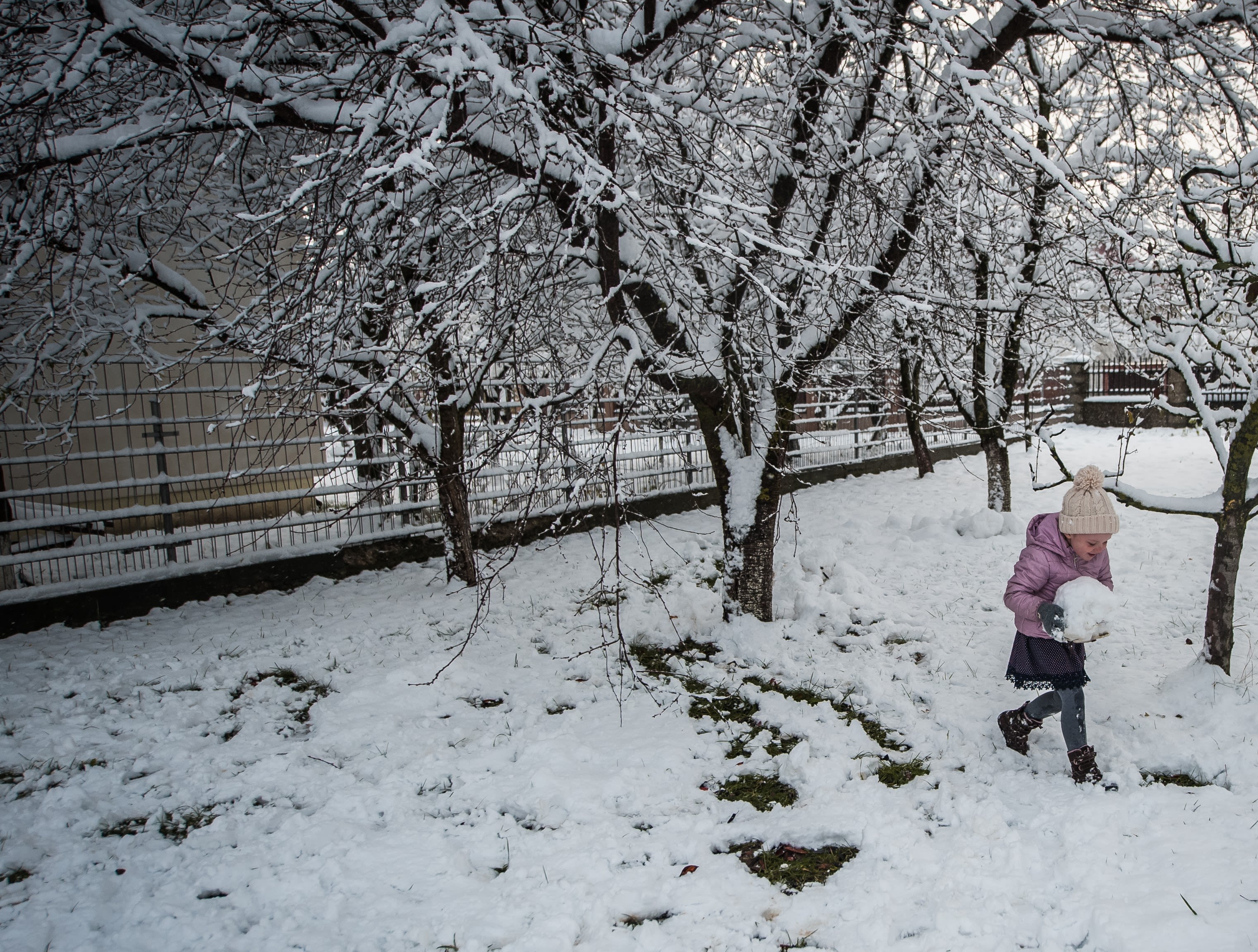
Karina*, 12
Karina lives with her siblings and mother in Northern Romania.
In Ukraine, they celebrated Christmas as a small family. They'd travel within Ukraine to somewhere with snow – putting aside work, chores, and phones to be able to enjoy winter recreational activities like sledding and skiing.
However, this year, Karina's Christmas was very different.

Karina sits for a portrait in her home in Romania. Photo: Alina Smutko/Save the Children.
Karina sits for a portrait in her home in Romania. Photo: Alina Smutko/Save the Children.
In her own words, Karina told us:
We moved to Romania, with nothing, with no one here. We drove to the border with Moldova. I didn't have time to say goodbye to any of my friends.
We thought [the war] would end in half a year at the most.
Last New Year I wished, our whole family wished, to celebrate the next New Year abroad. Of course, we wanted other circumstances.
In Romania, Karina has made a few good friends. Together, they go for walks, make handicrafts, and organise musical concerts.
[Save the Children] goes straight to my heart. I have met all my friends there. They organise trips, they give away coupons, they help with food, water, clothes. They really want to help and they really help. I really love them!
There's painting, football, tennis, child development classes, and a psychologist. And there's Romanian language classes for kids and adults.
Psychologists are also very cool. They could really get into your soul, I tell you. On some of their classes I was crying.
I feel the much-needed support.
Save the Children continue to support families, like Karina's, through cash and voucher assistance, medical assistance, psychological support, educational supplies and other essential items.
Donate to save the lives of children living in crisis in Ukraine and countries around the world.
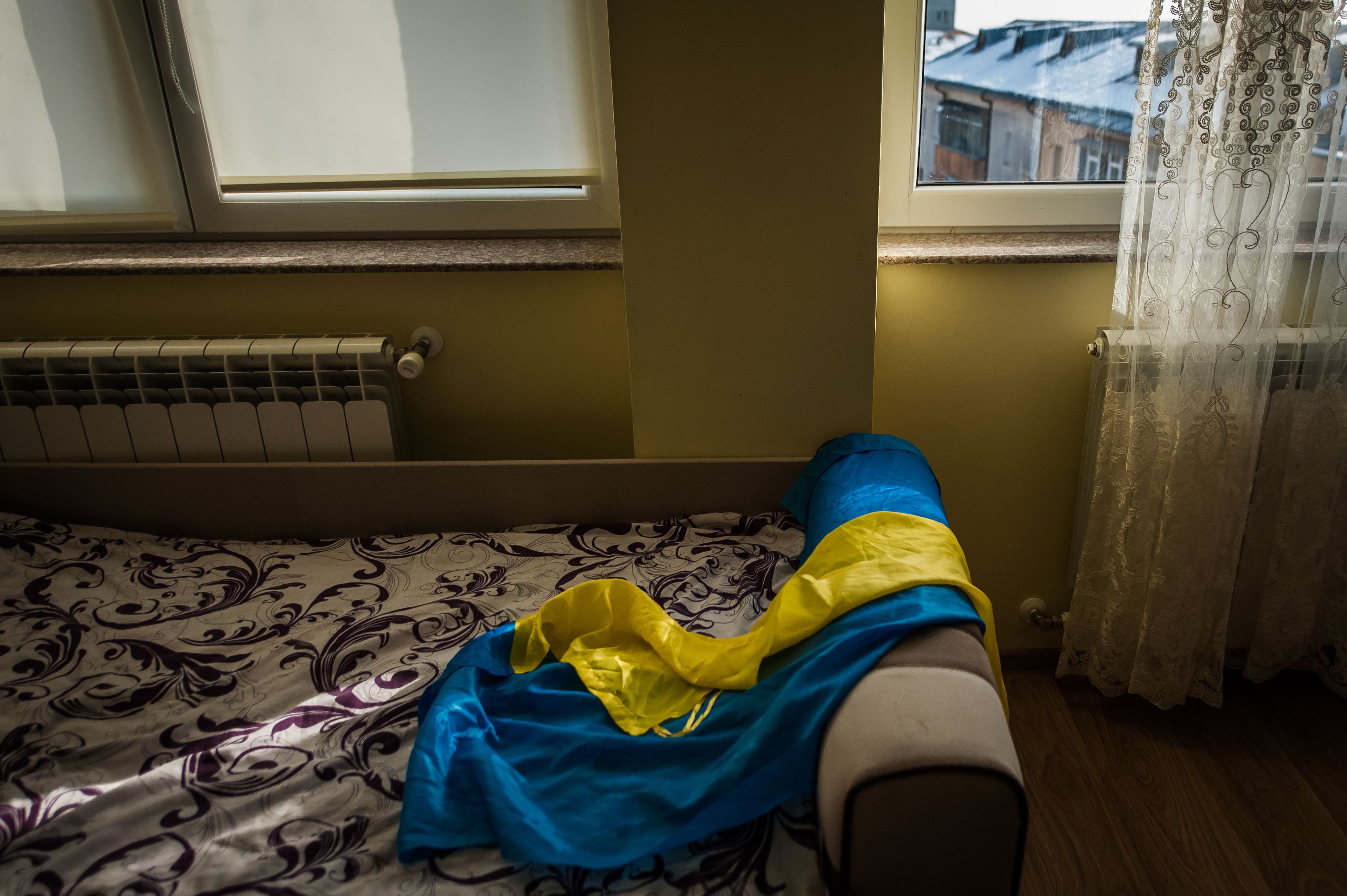
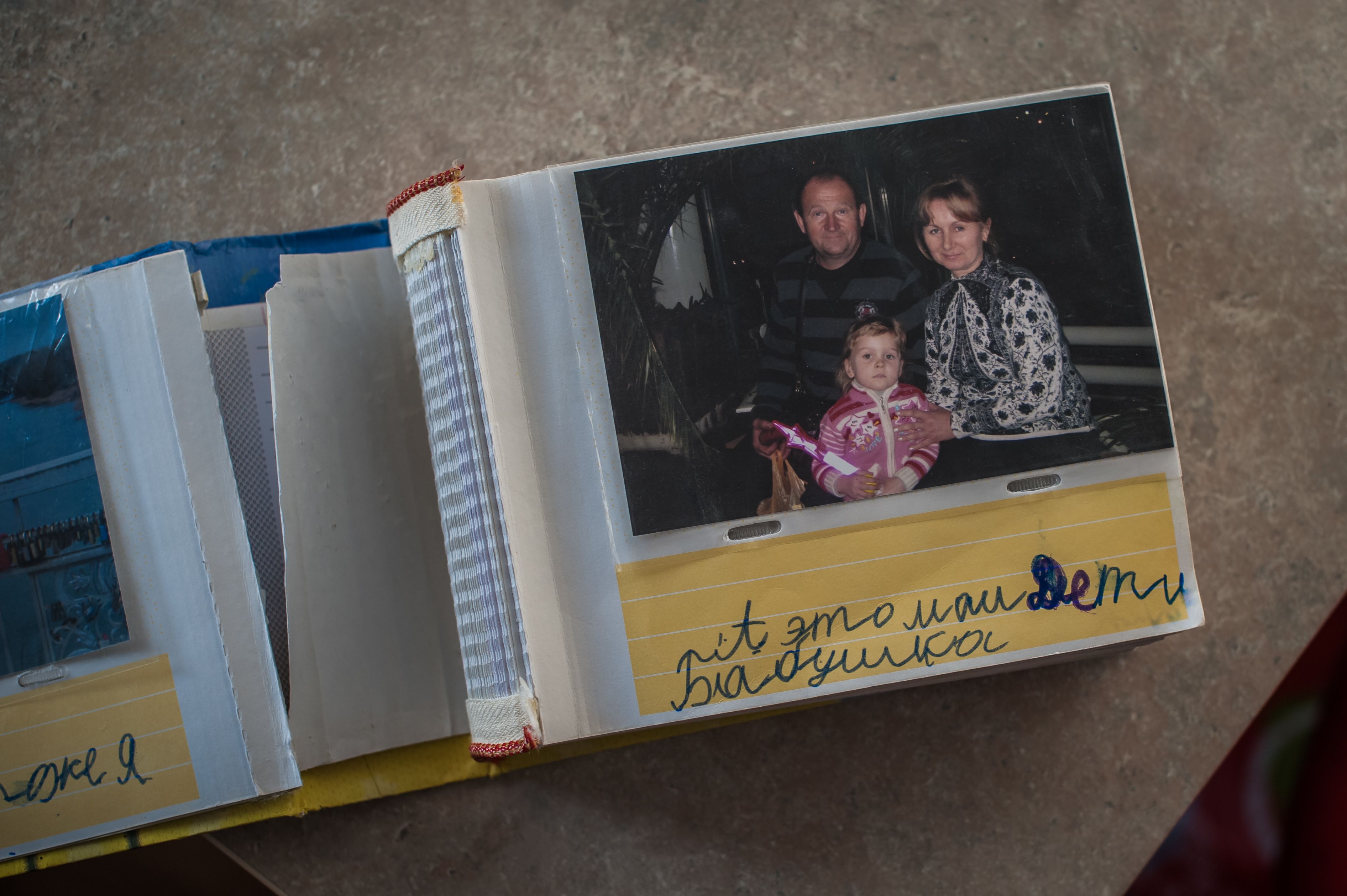
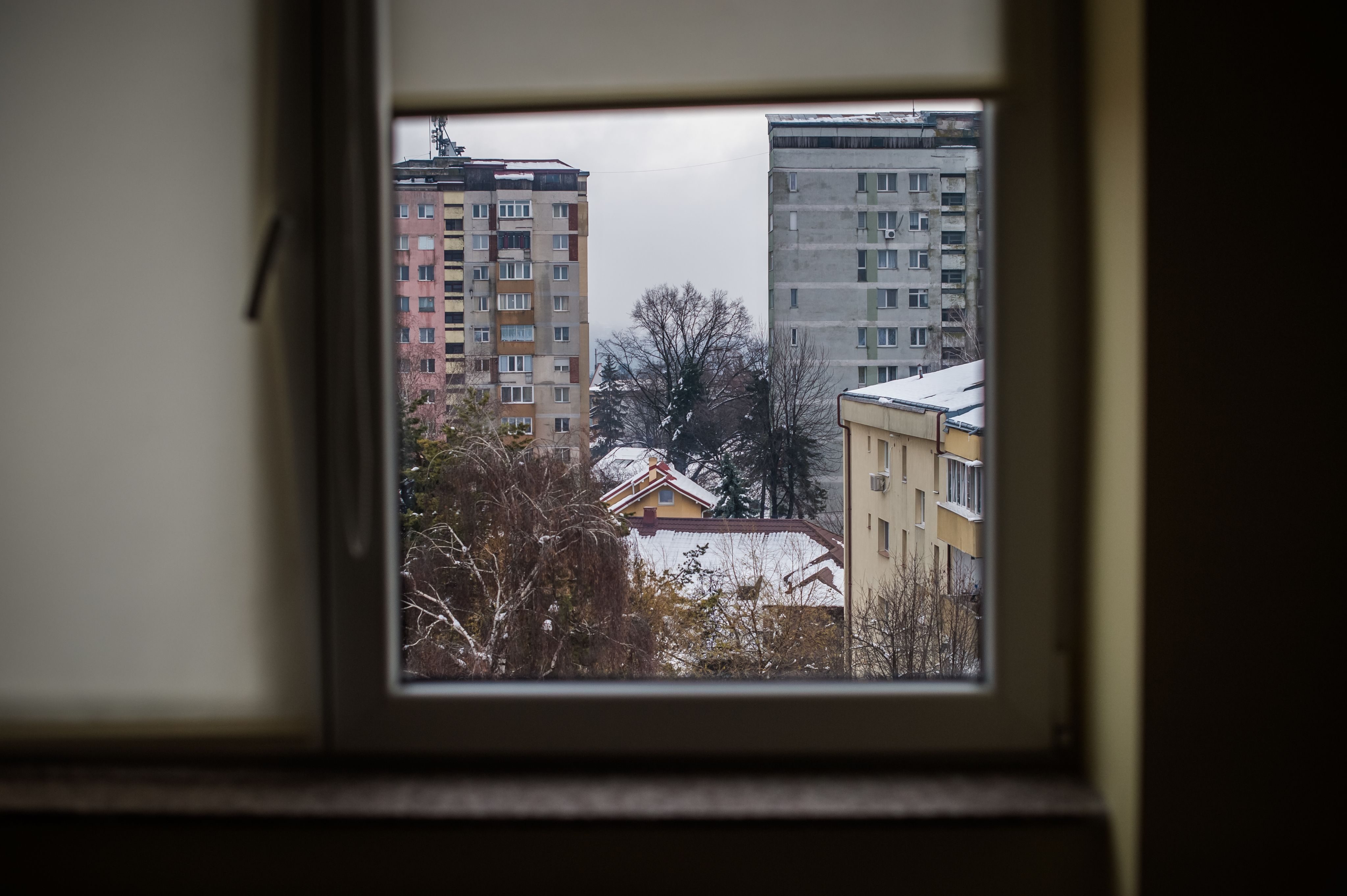
How you can help
As we close in on one year since the escalation of the war in Ukraine, or as we call it in Ukraine, 365 days of February 24, I remember the children who are bearing the brunt of this war.
Their lives have been changed forever as they deal with a new reality, perhaps far from home, school or loved ones. The impact upon their mental wellbeing cannot be ignored, and as we move into the second year, we will strive to help not only with the immediate humanitarian needs but also the long-lasting impacts of war.
Save the Children has been working in Ukraine and delivering humanitarian aid to children and their families since 2014. We will stay as long as it takes for families to rebuild their lives.
Please help us. Our Children's Emergency Fund allows us to respond wherever the need is greatest. Donate to save the lives of children living in crisis in Ukraine and countries around the world.
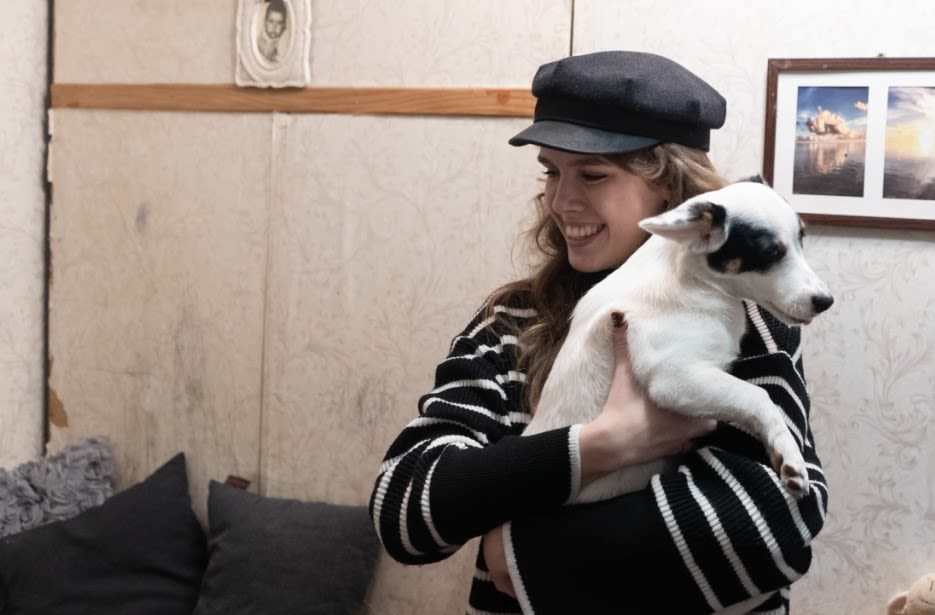
Kateryna smiles while holding a dog in the home of a family supported by Save the Children.
Kateryna smiles while holding a dog in the home of a family supported by Save the Children.
Thank you, Kateryna.
